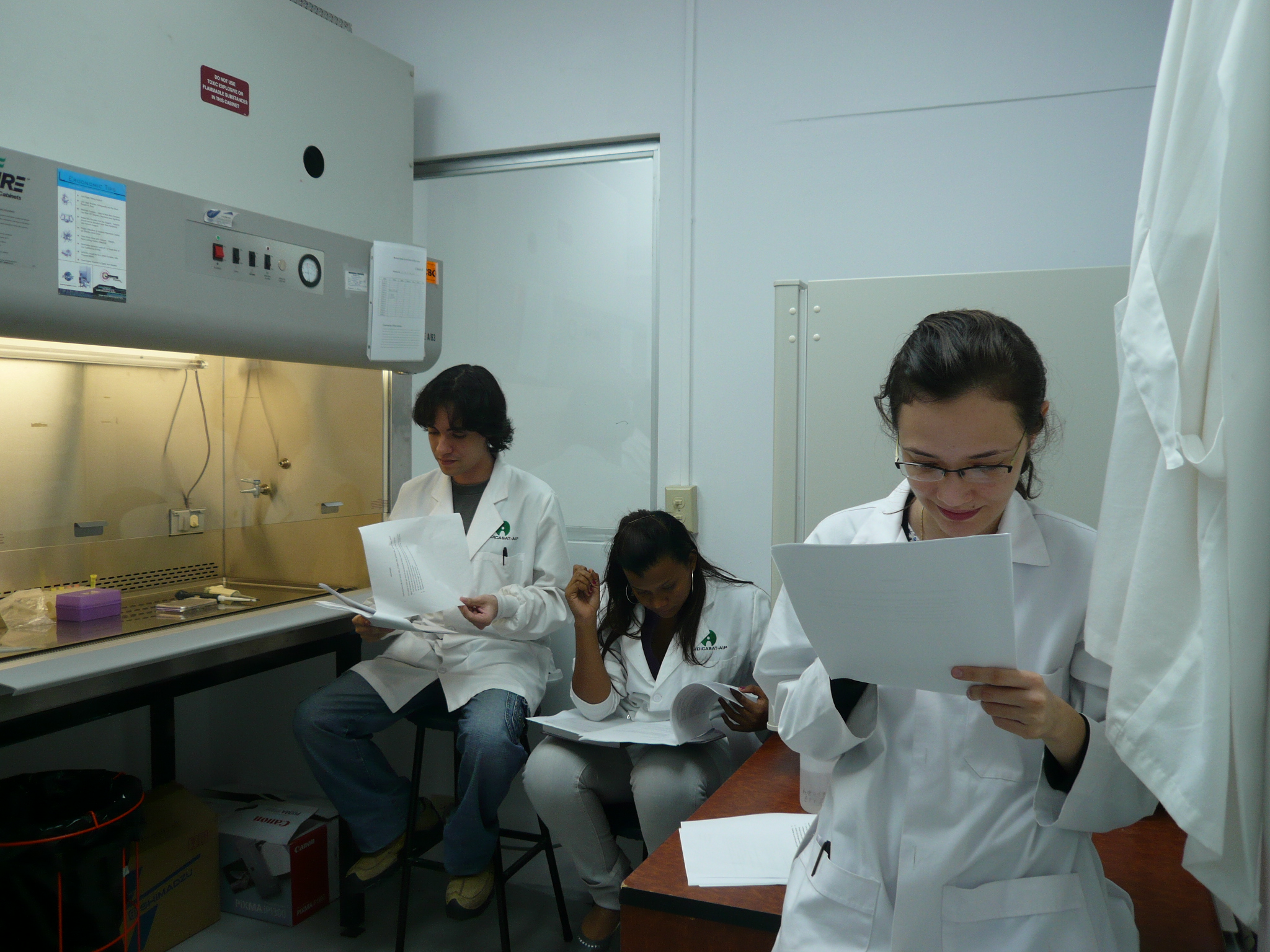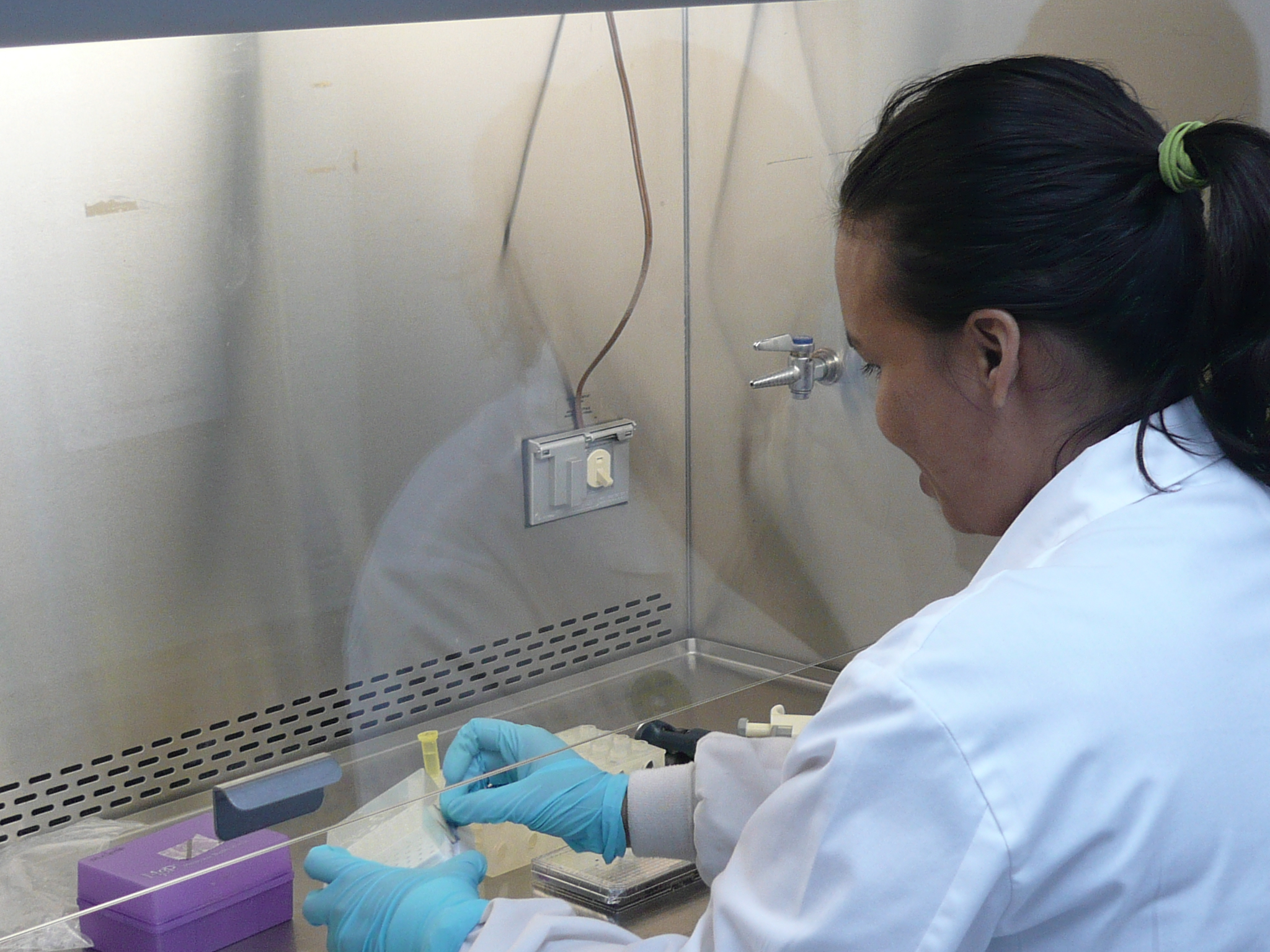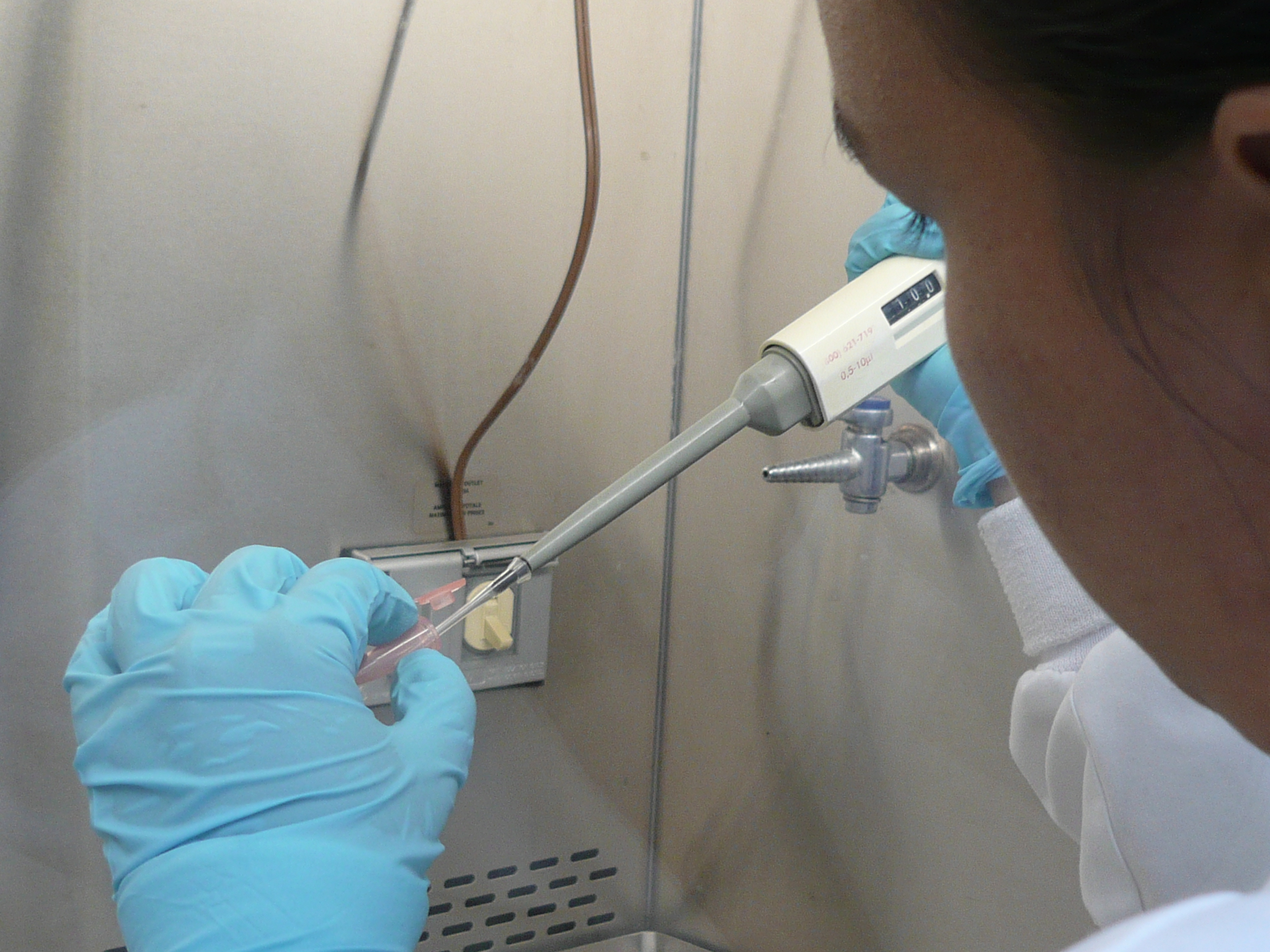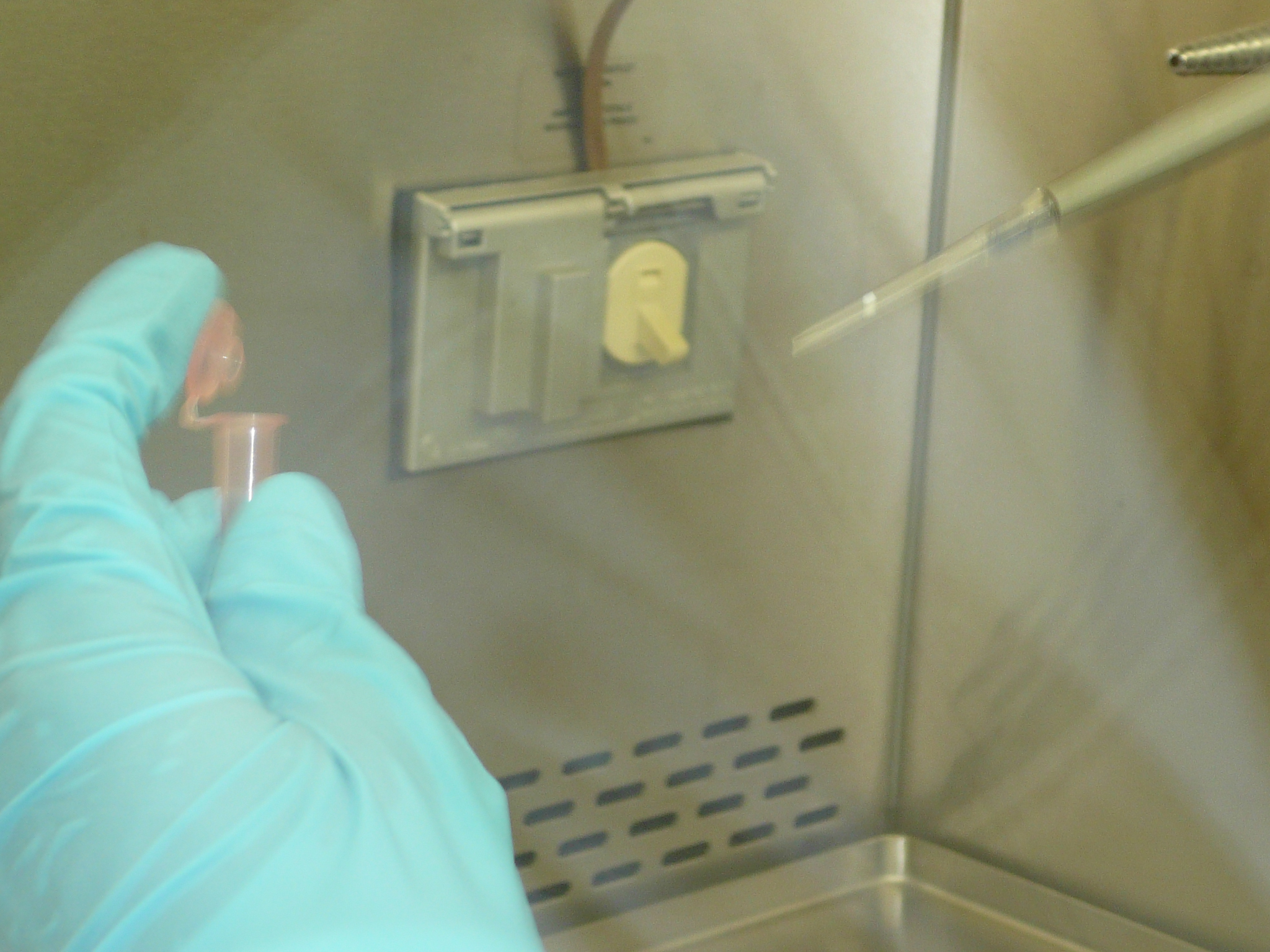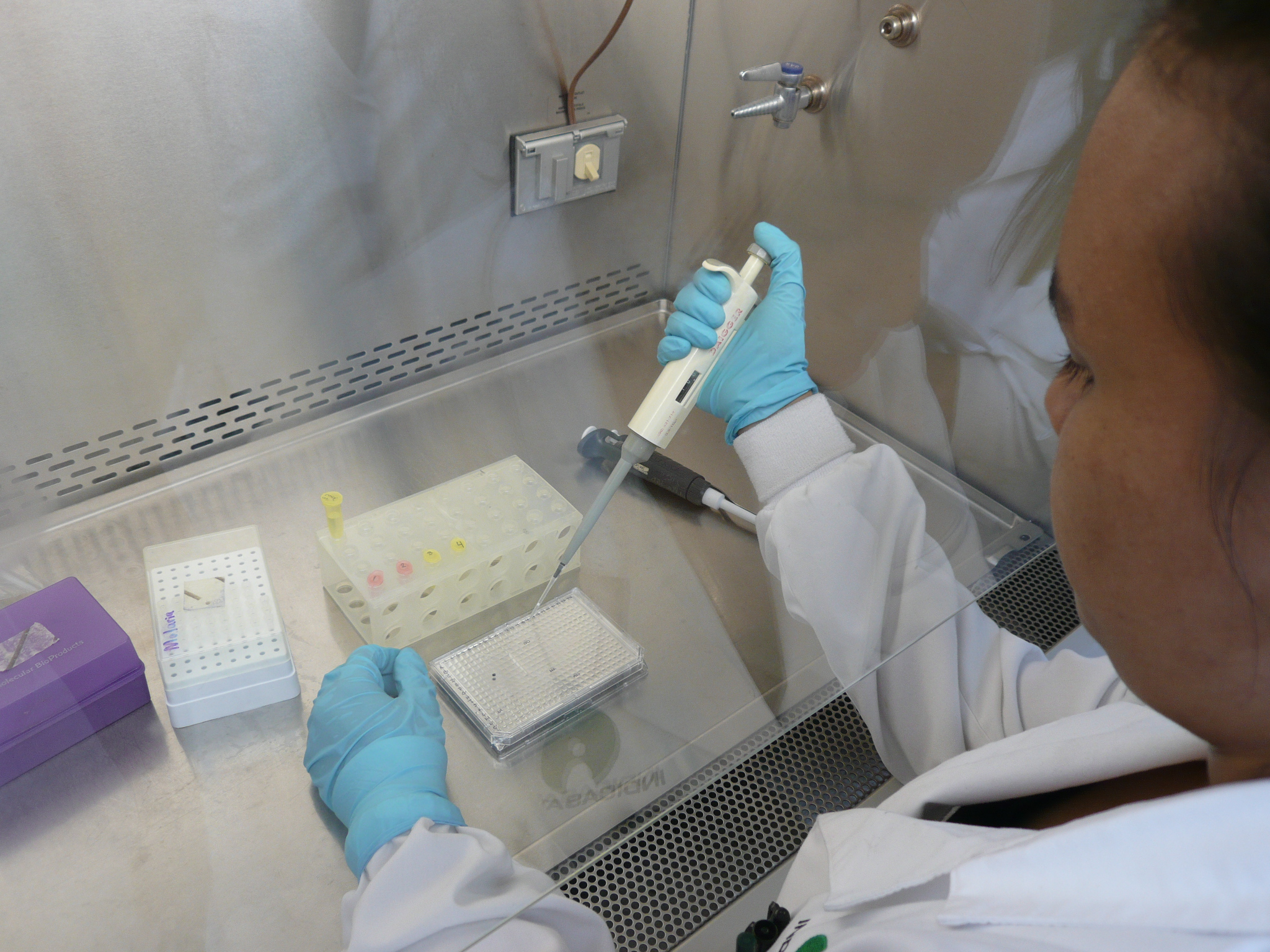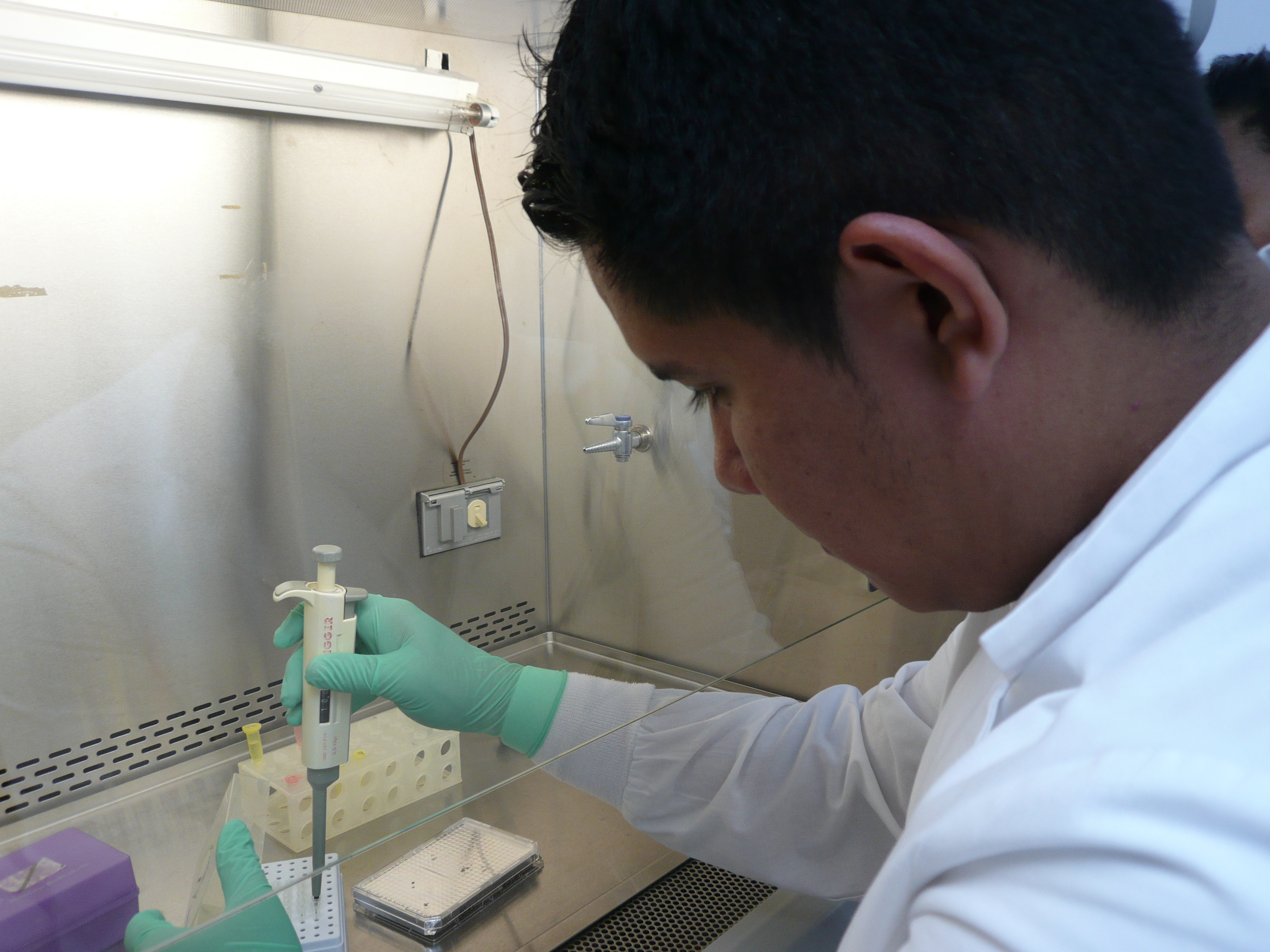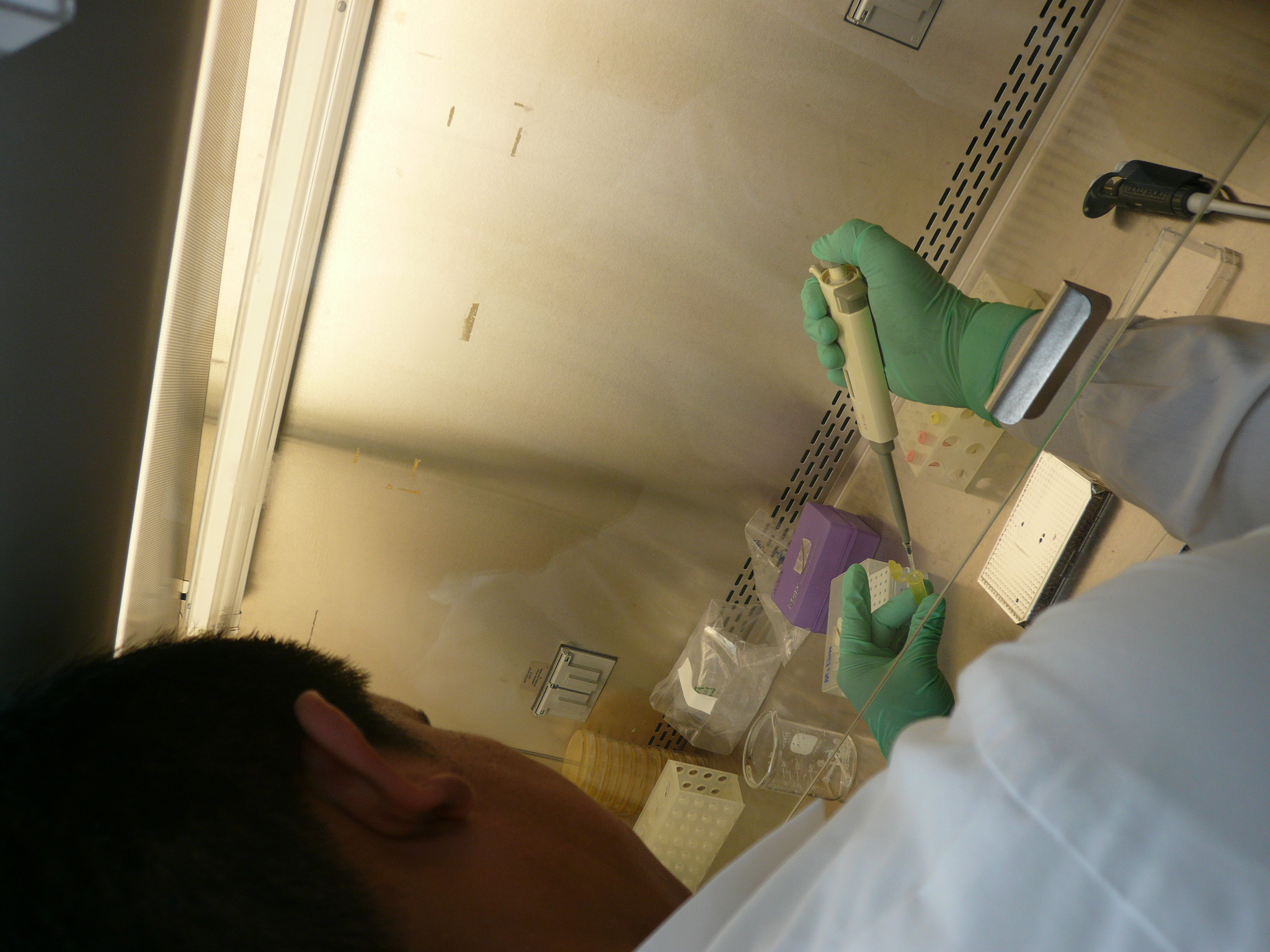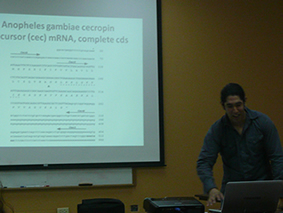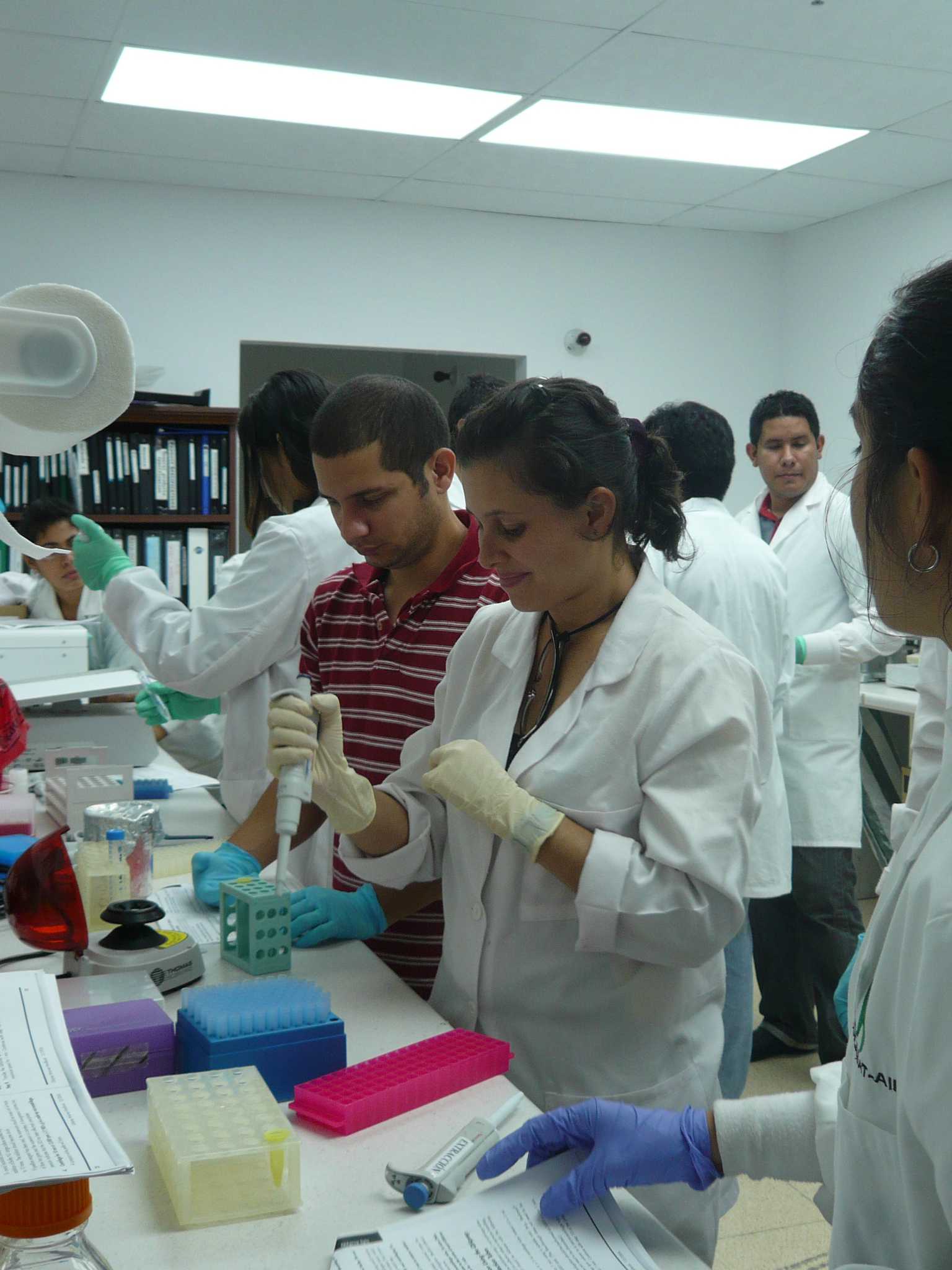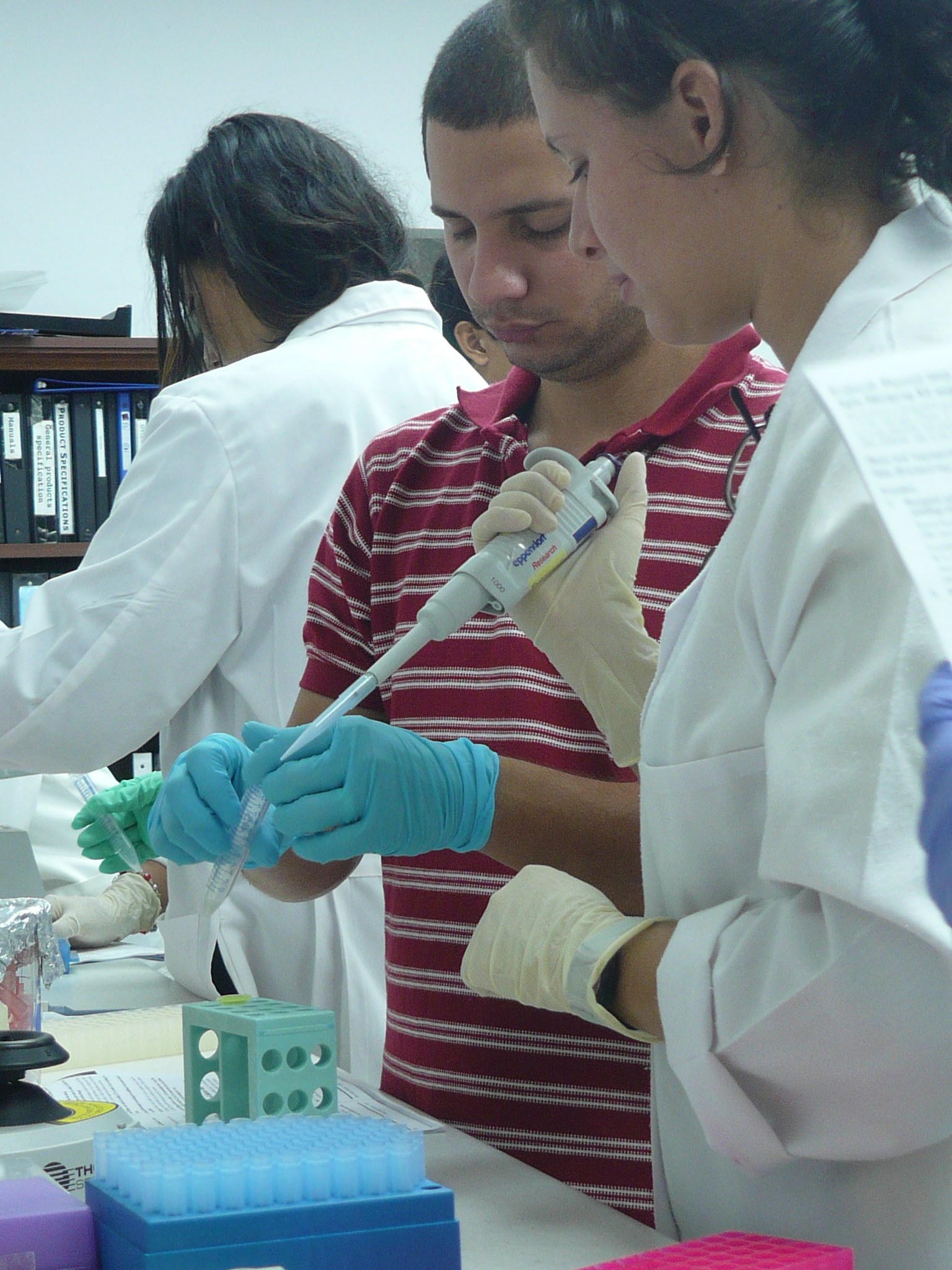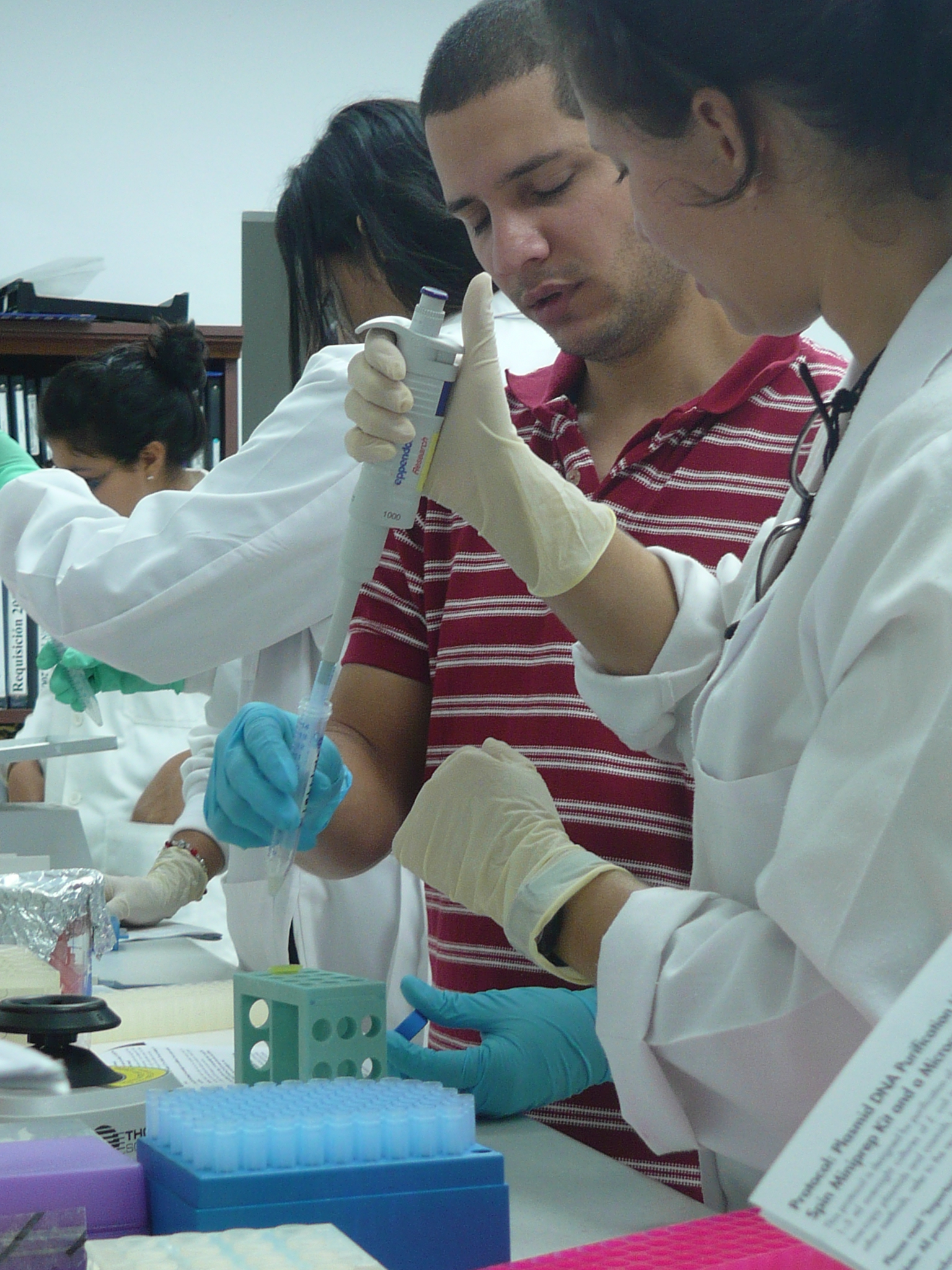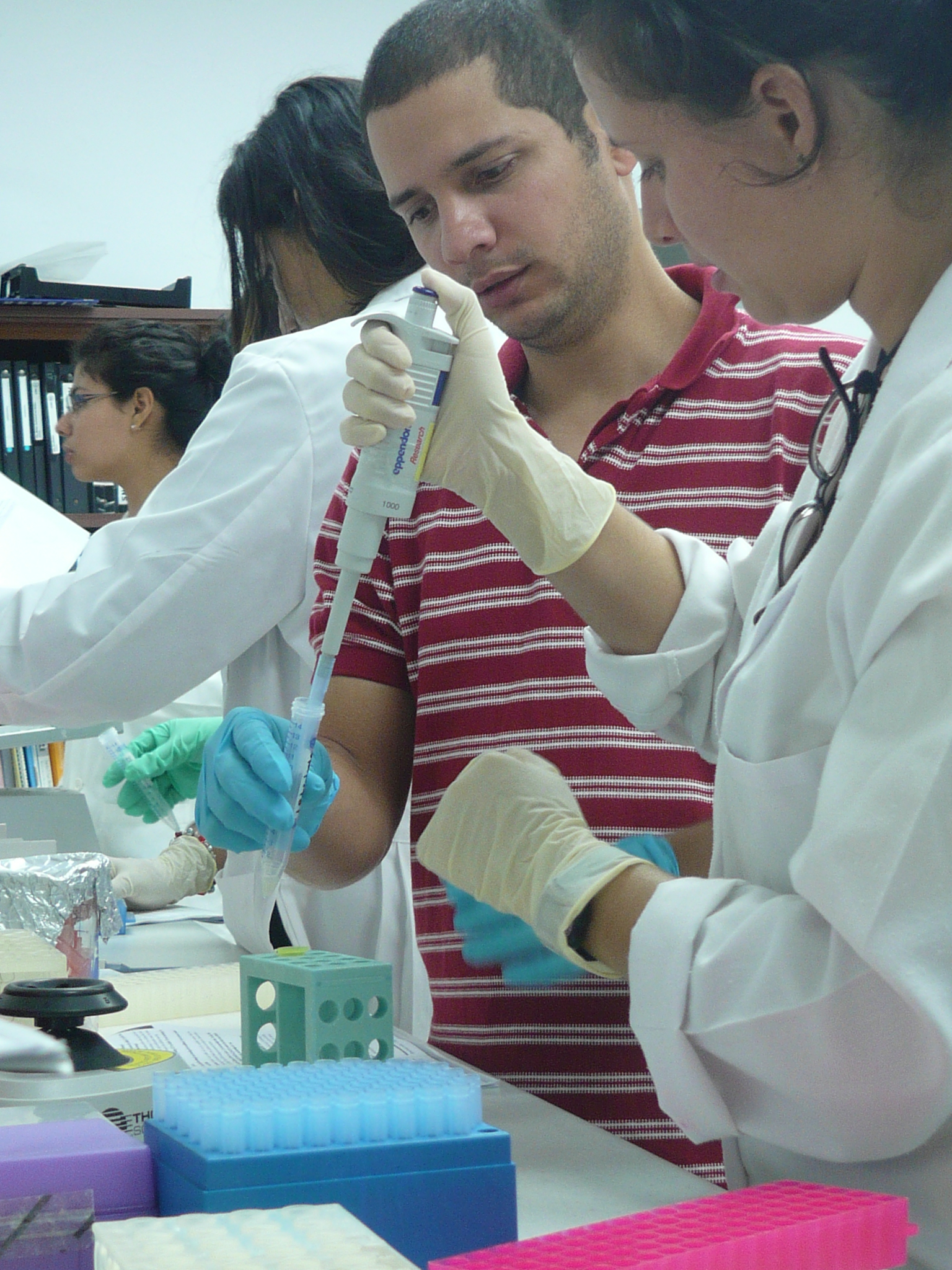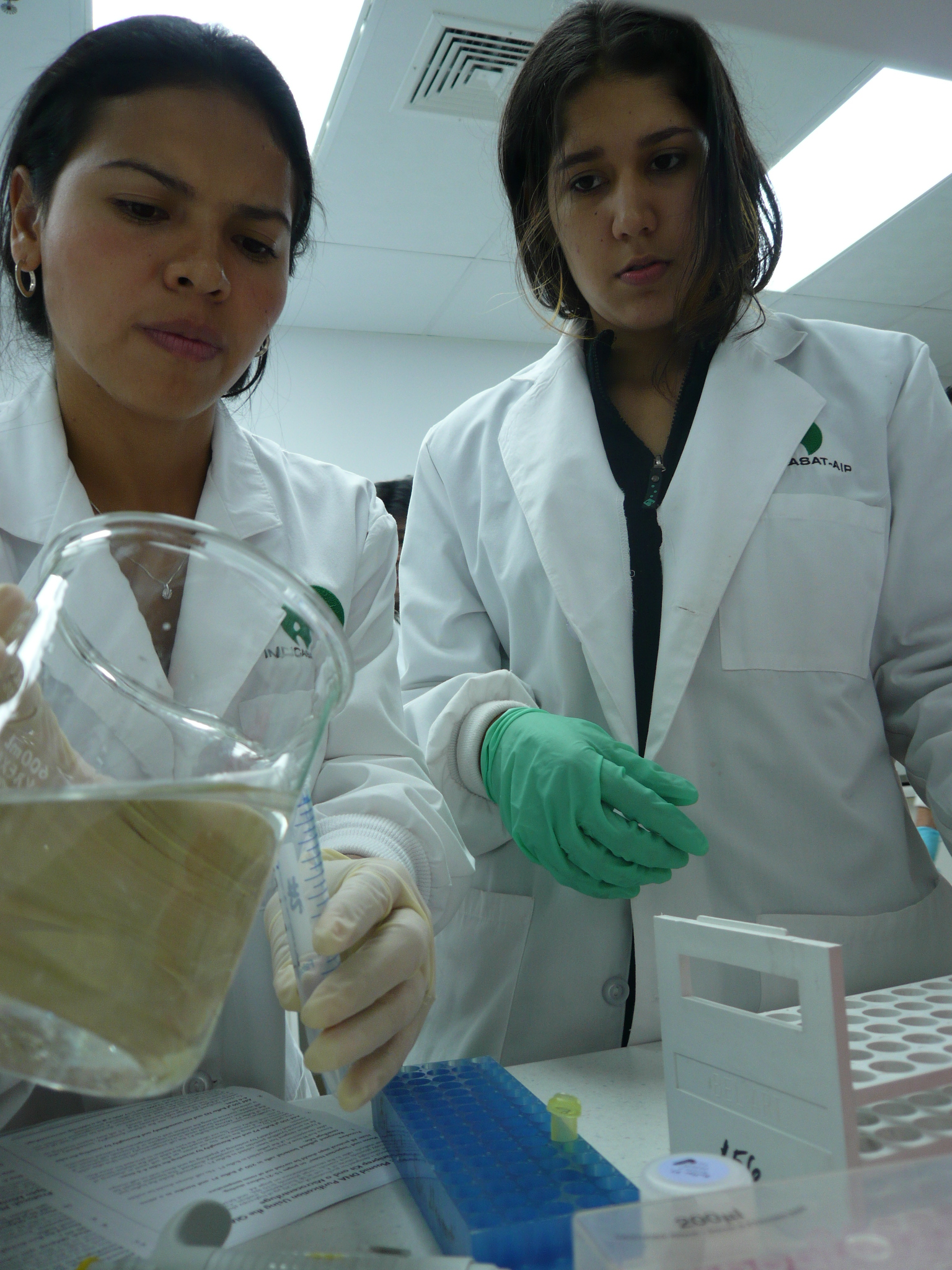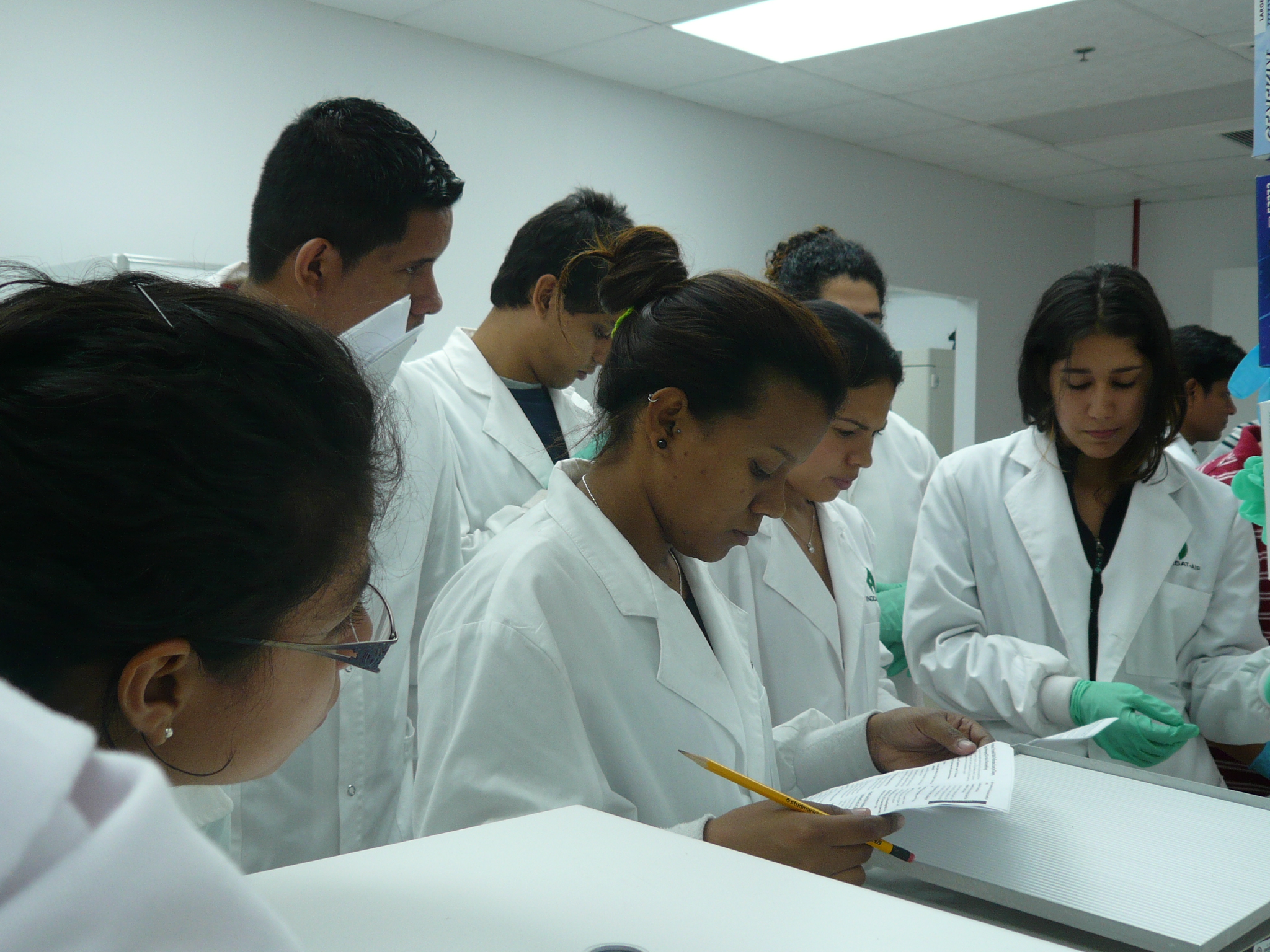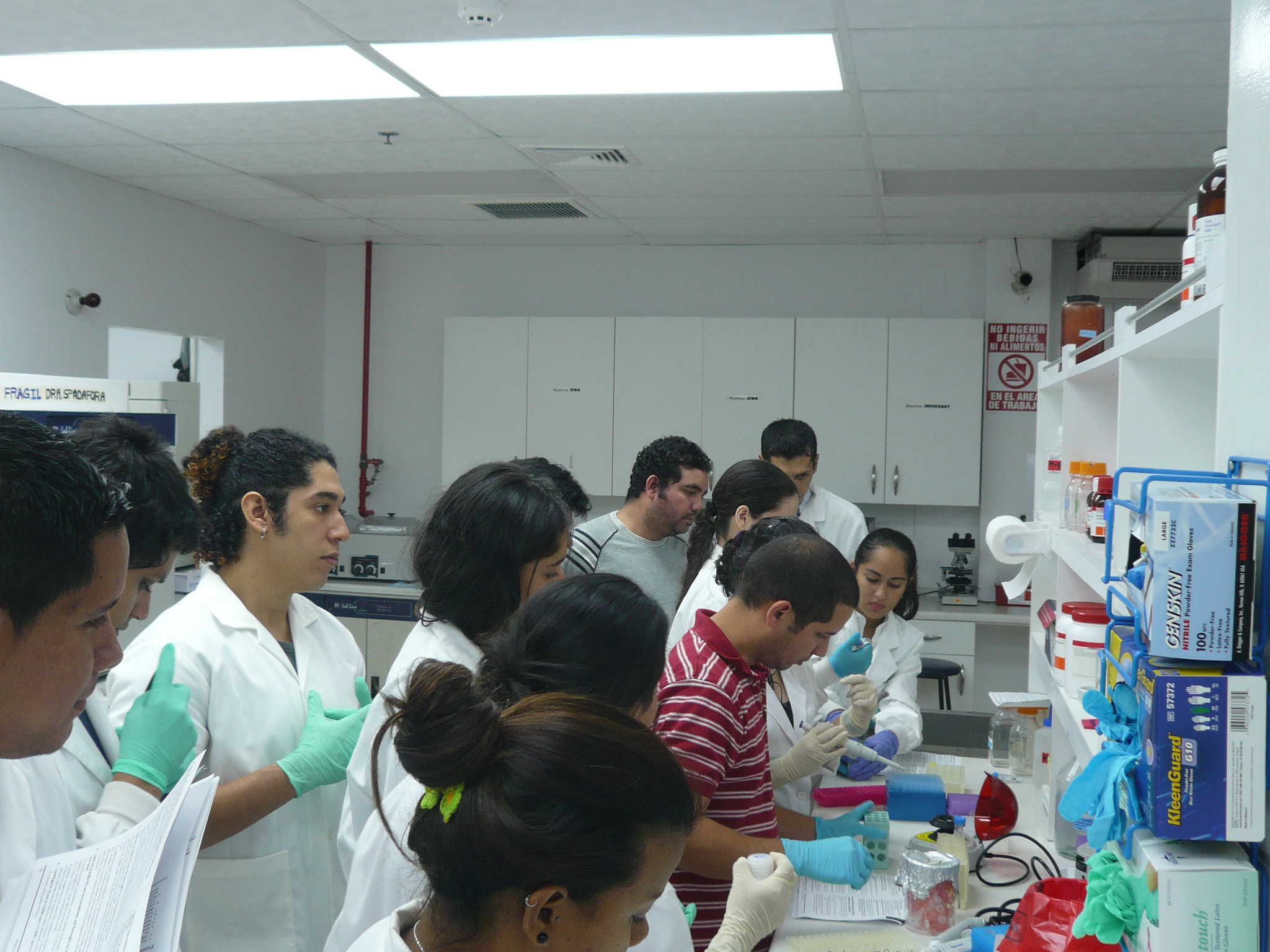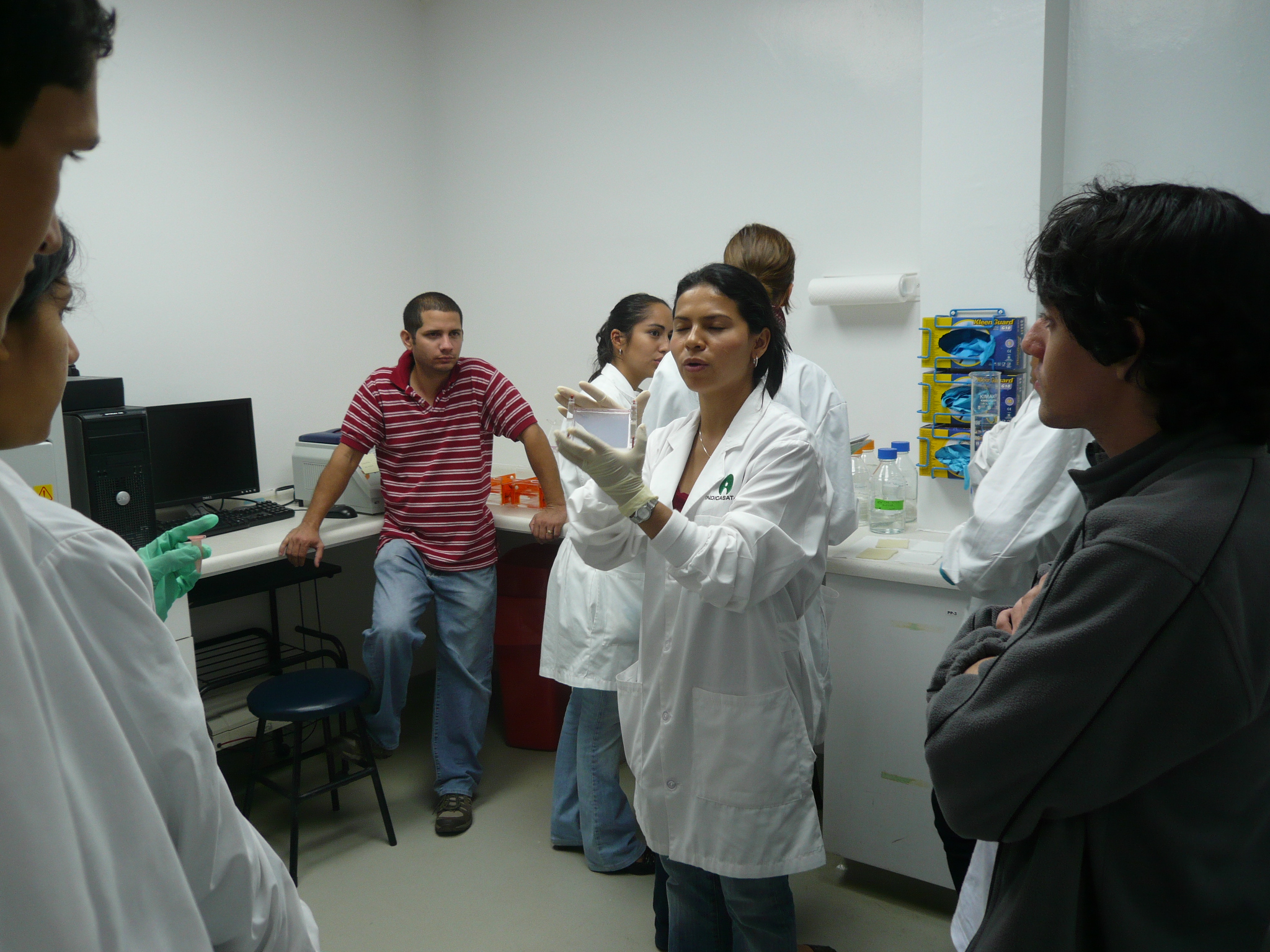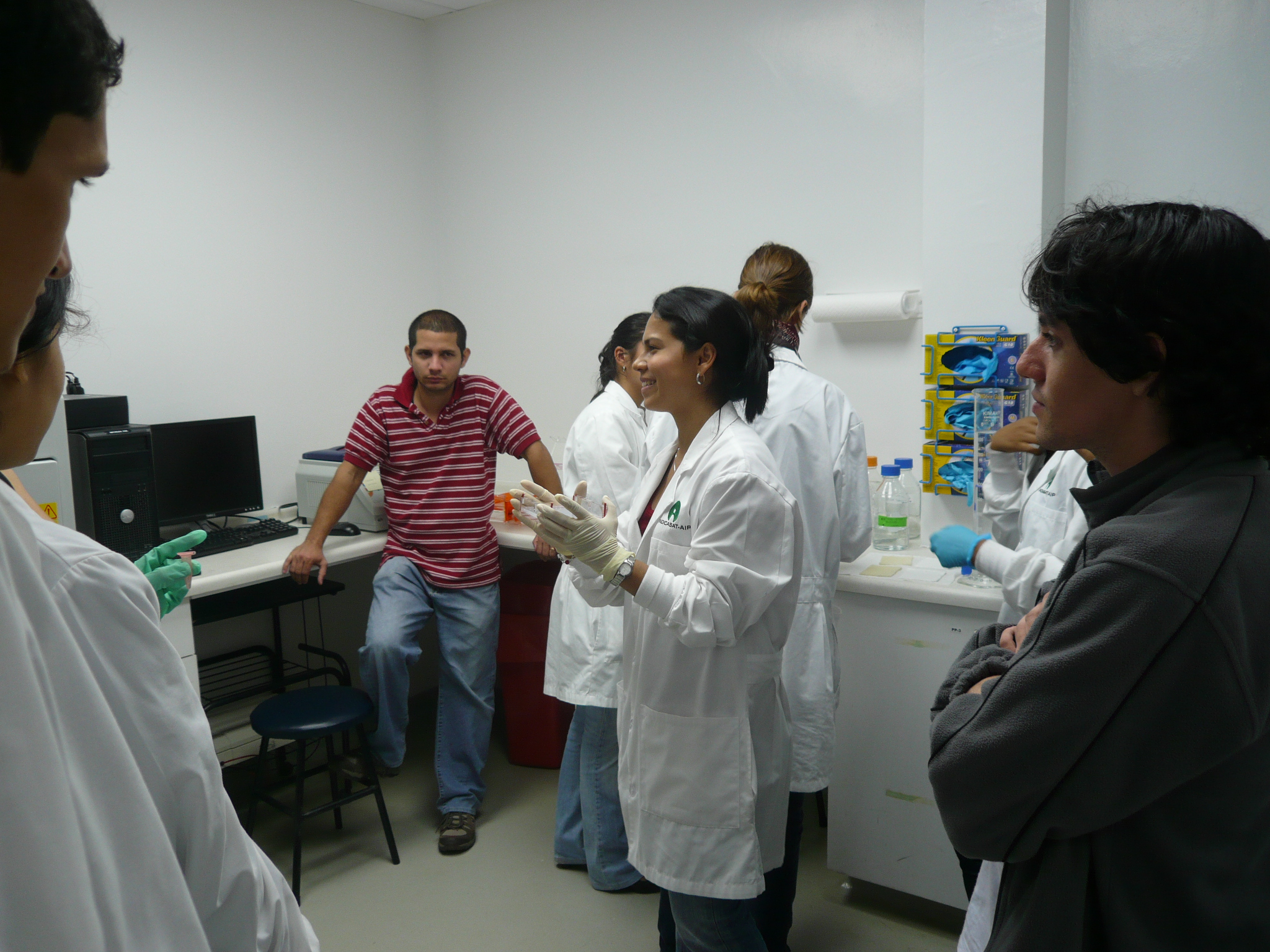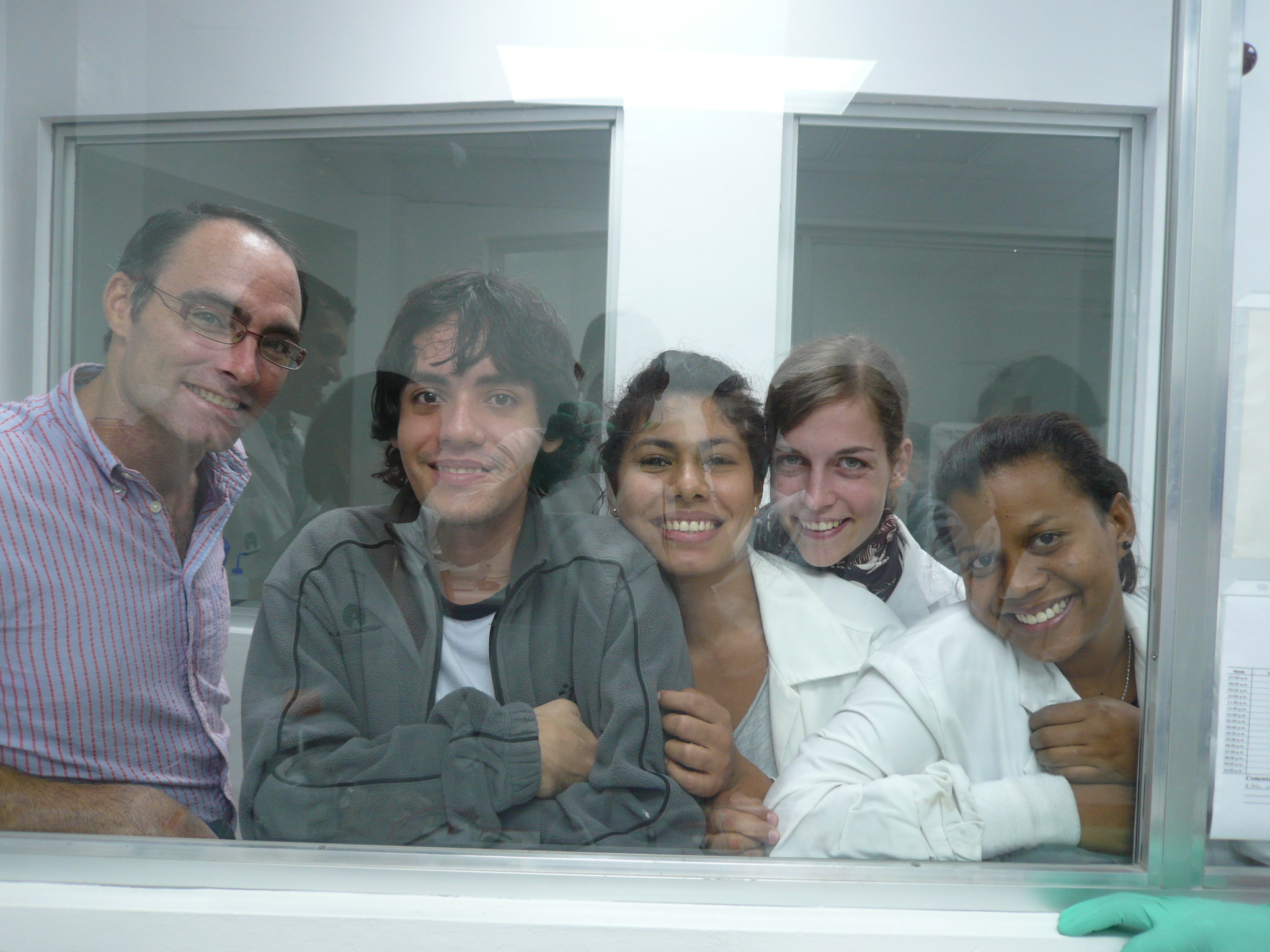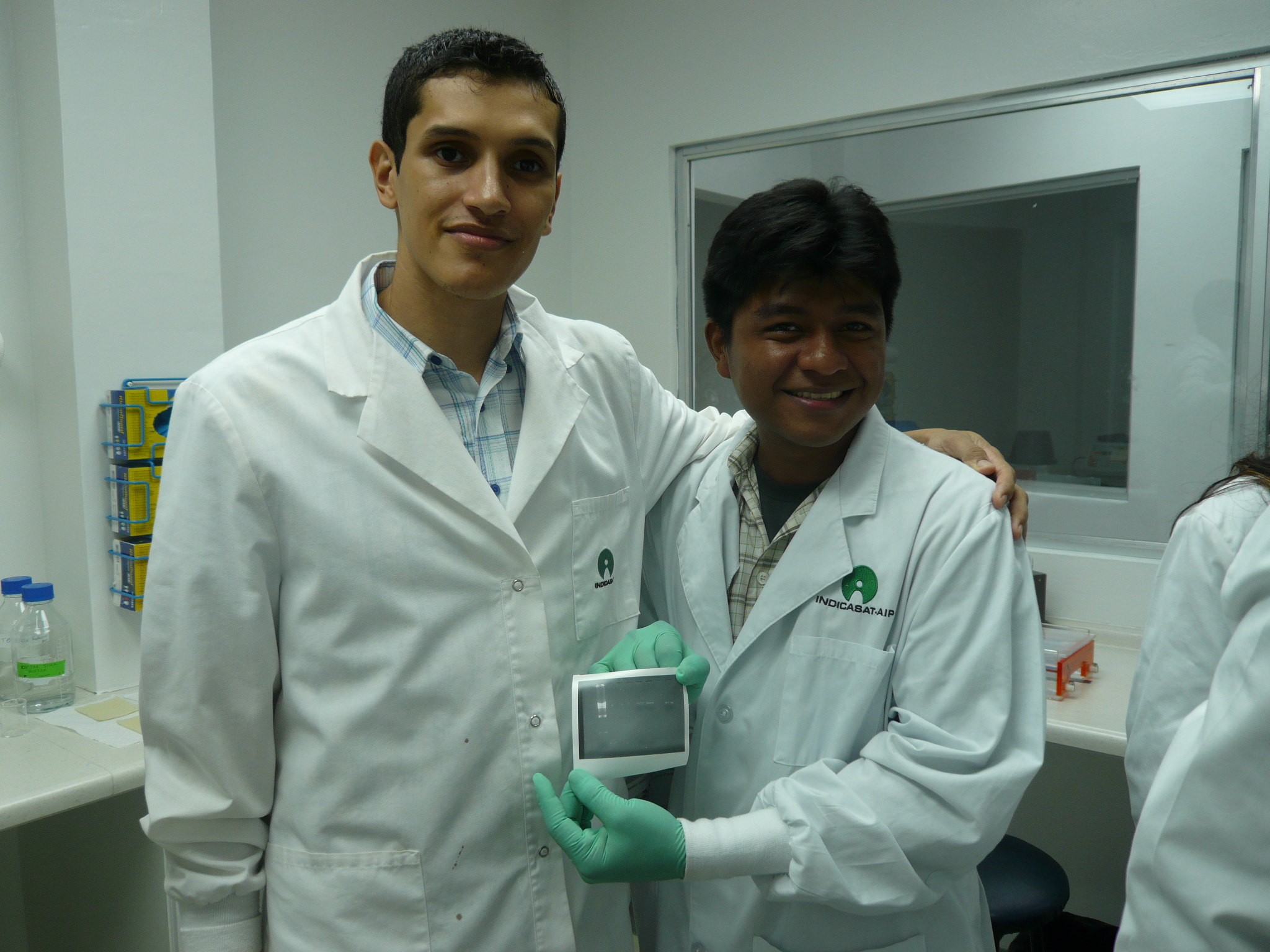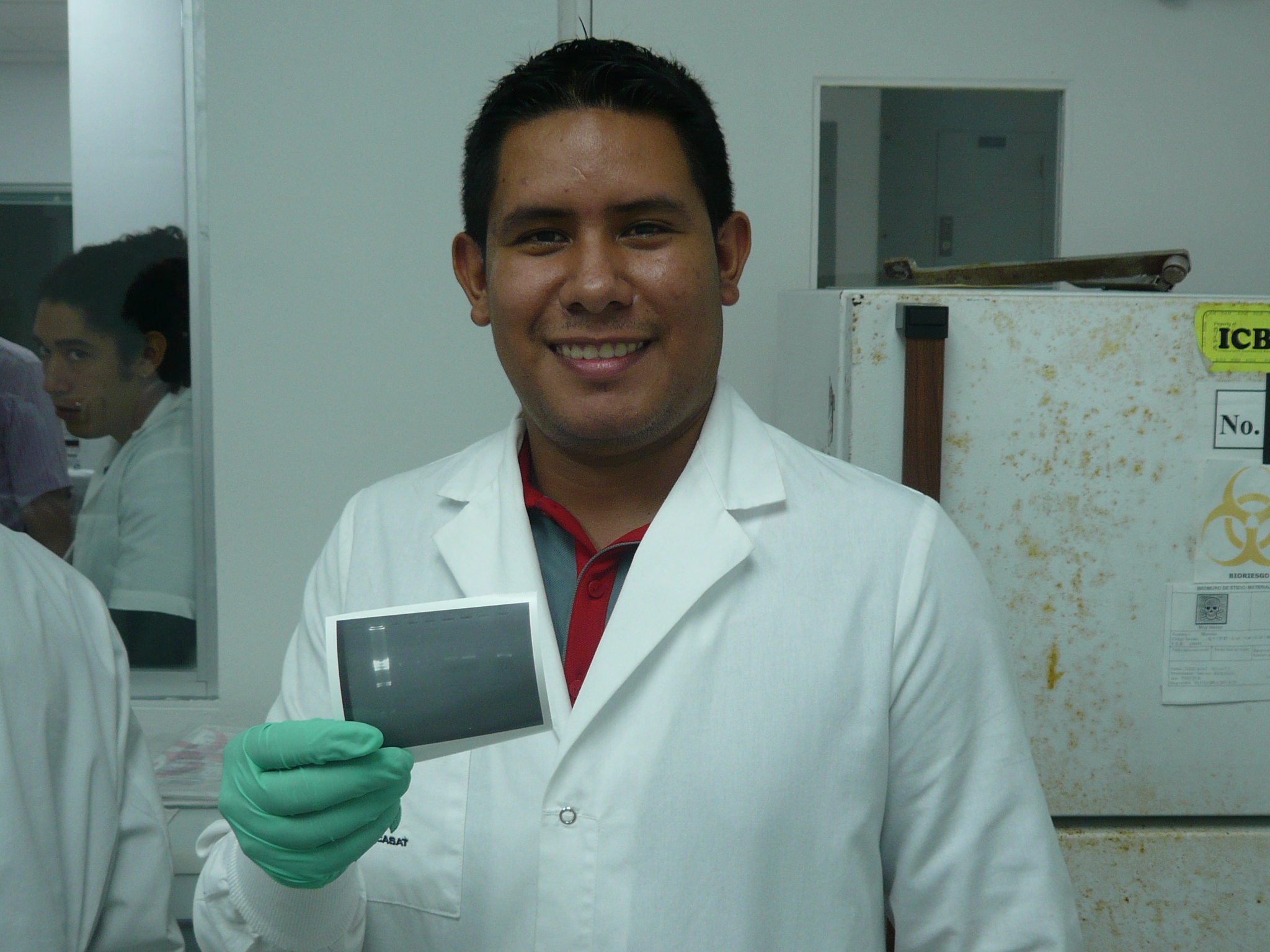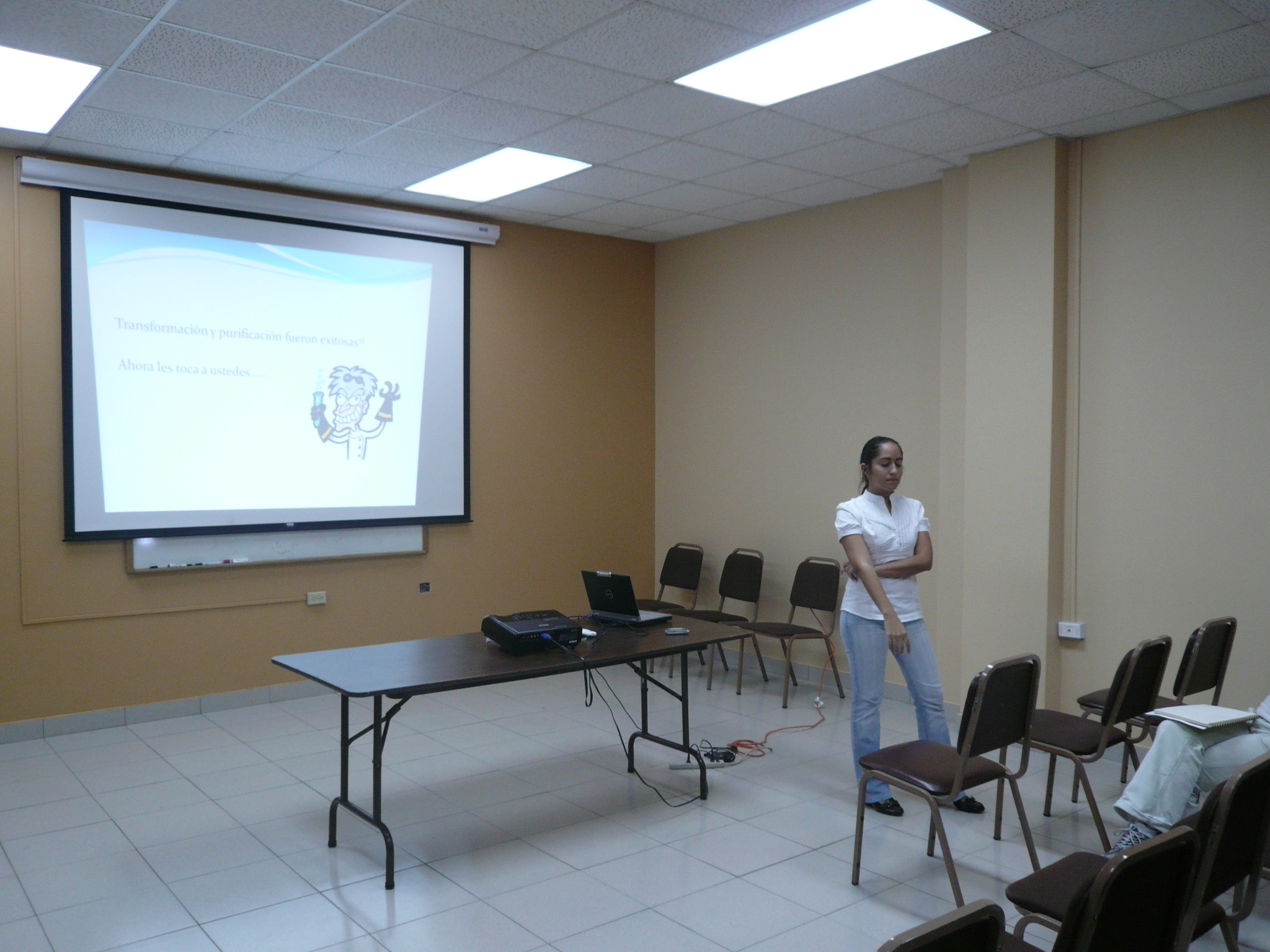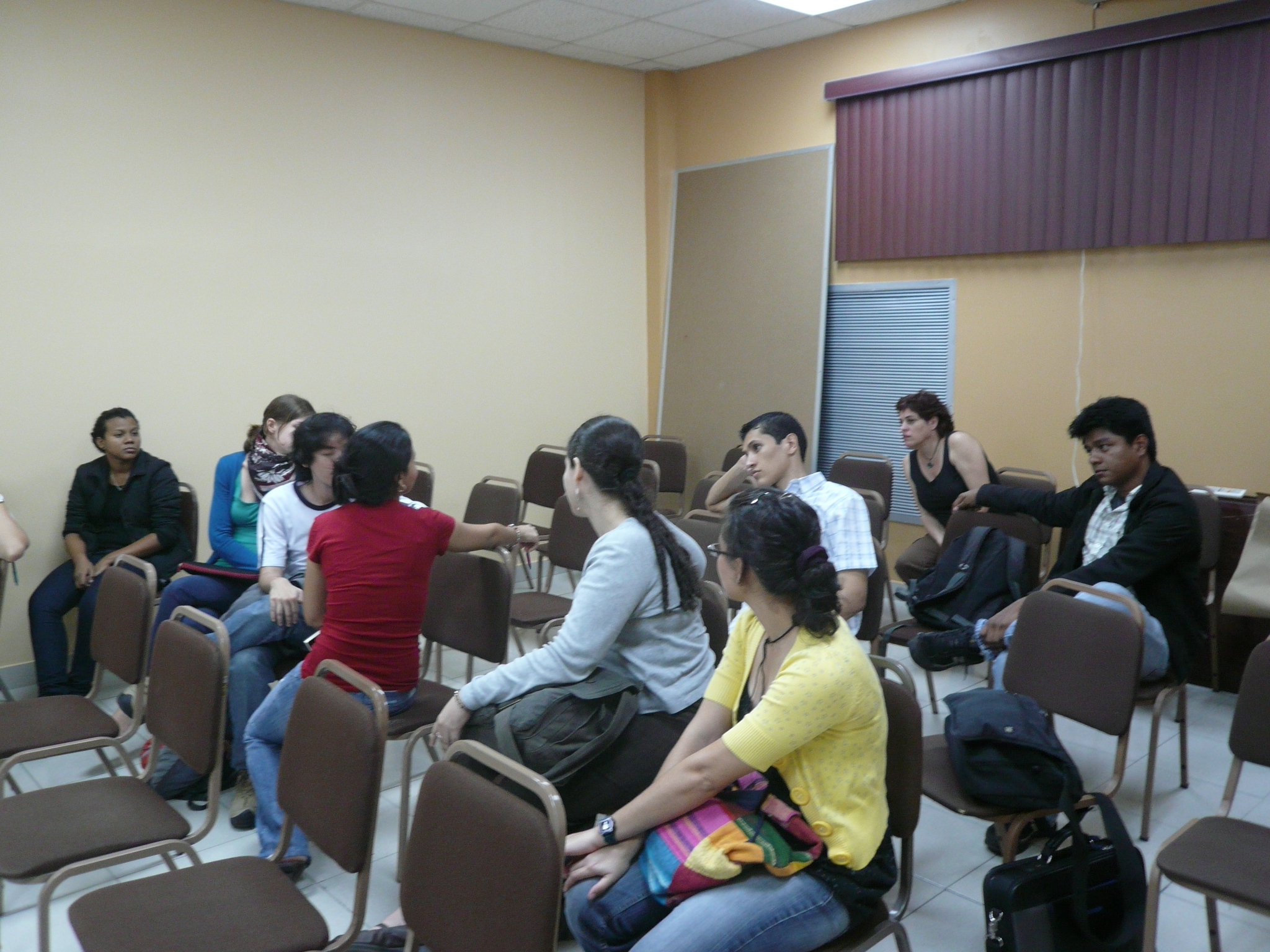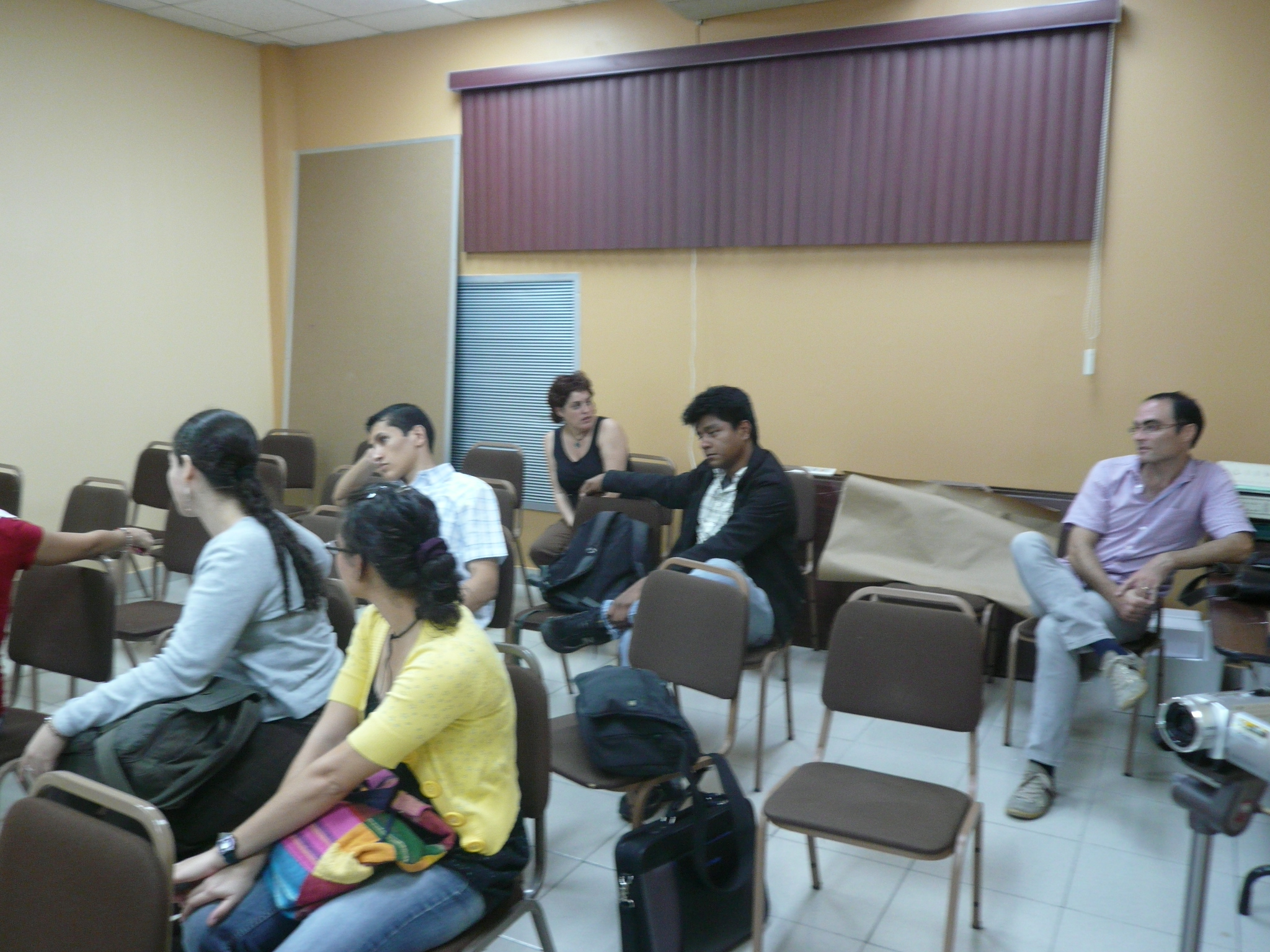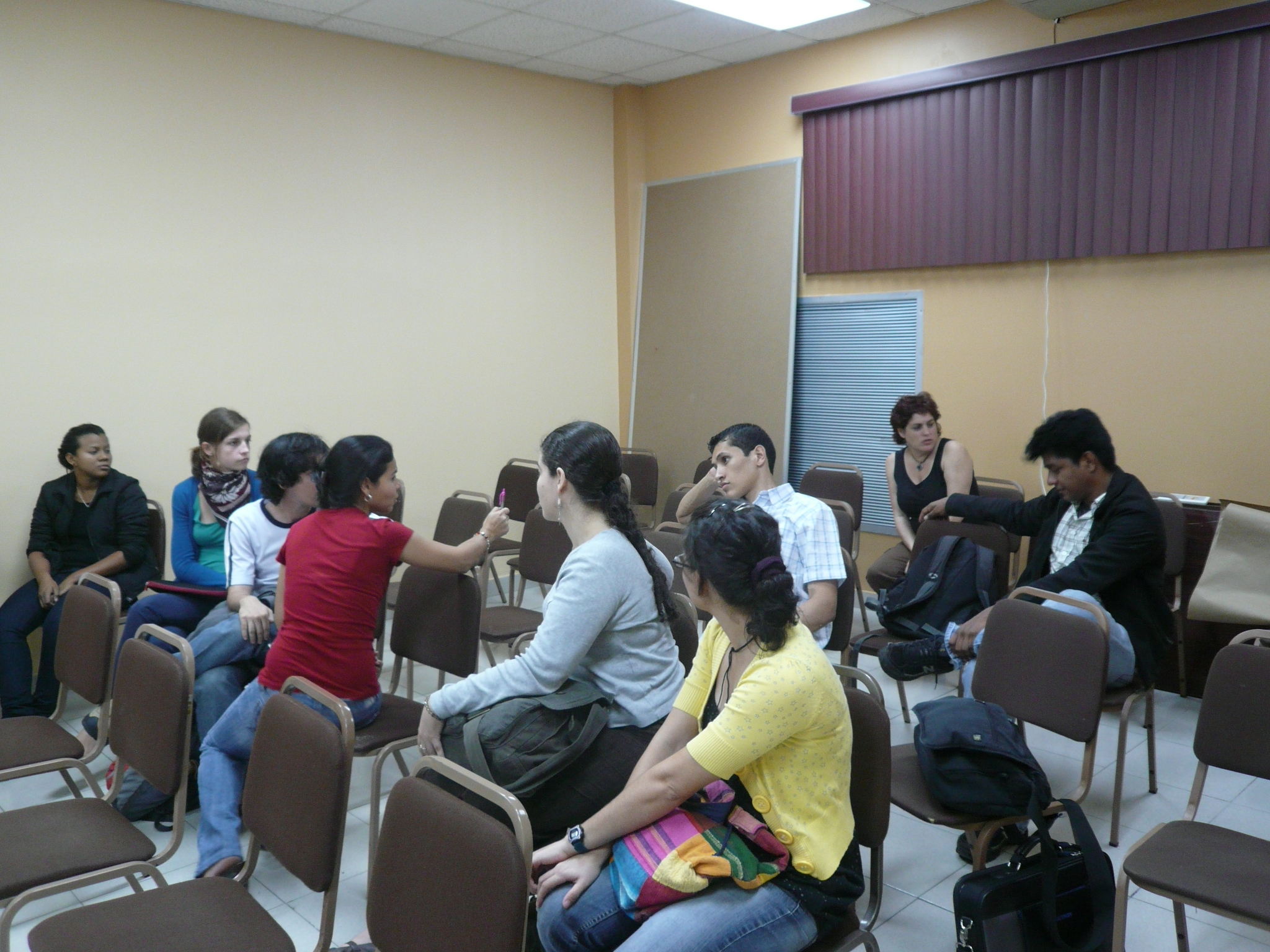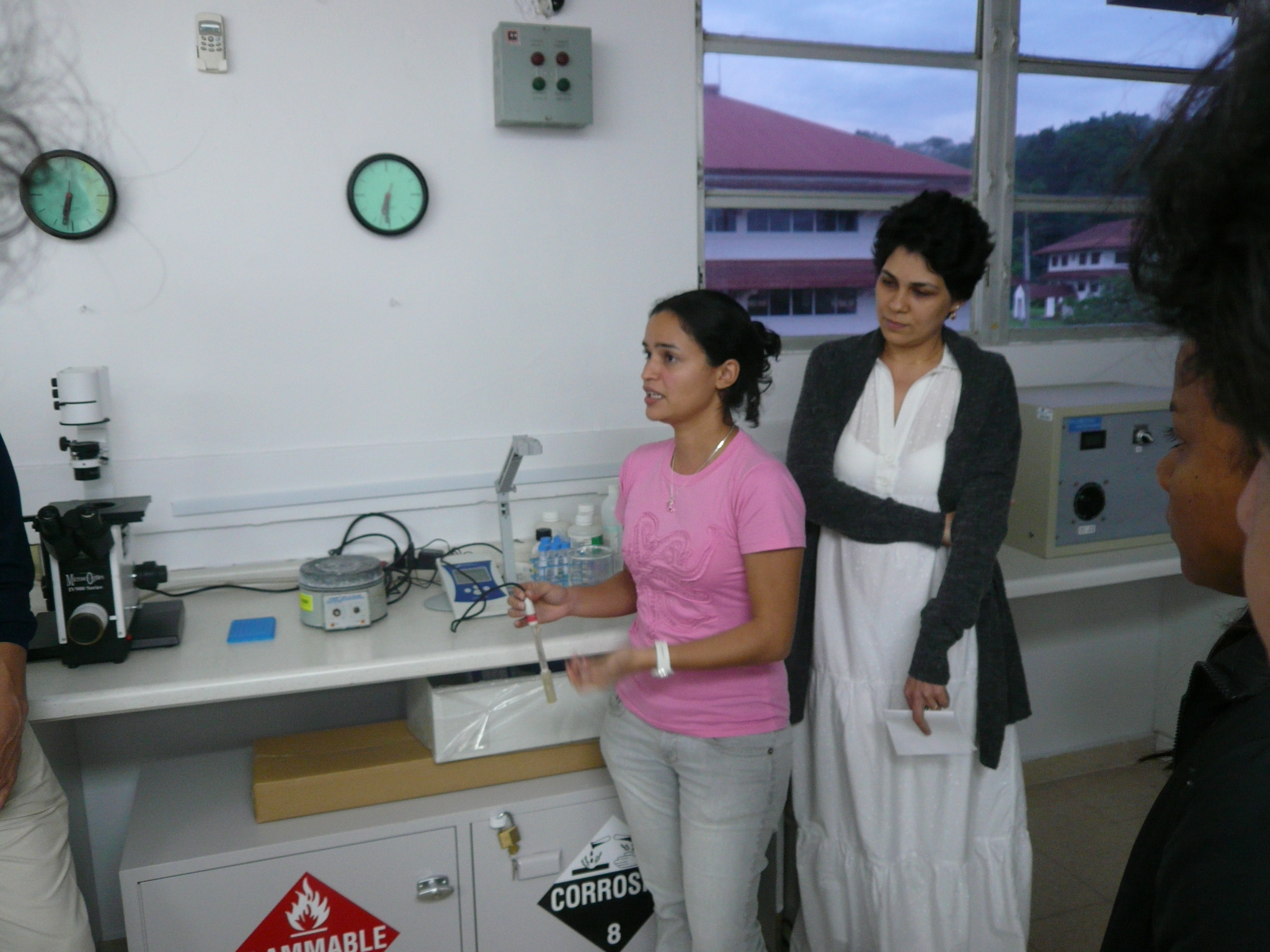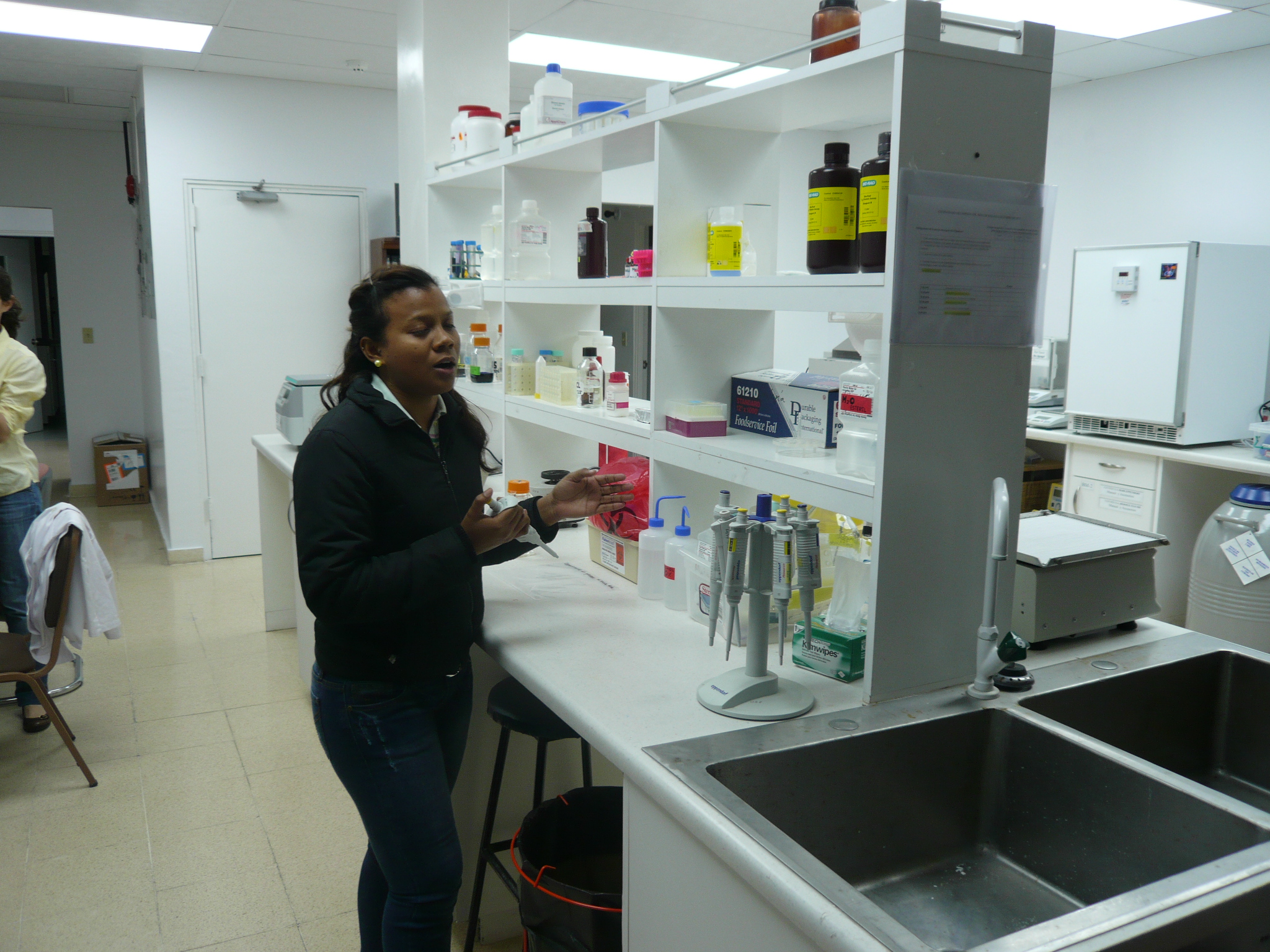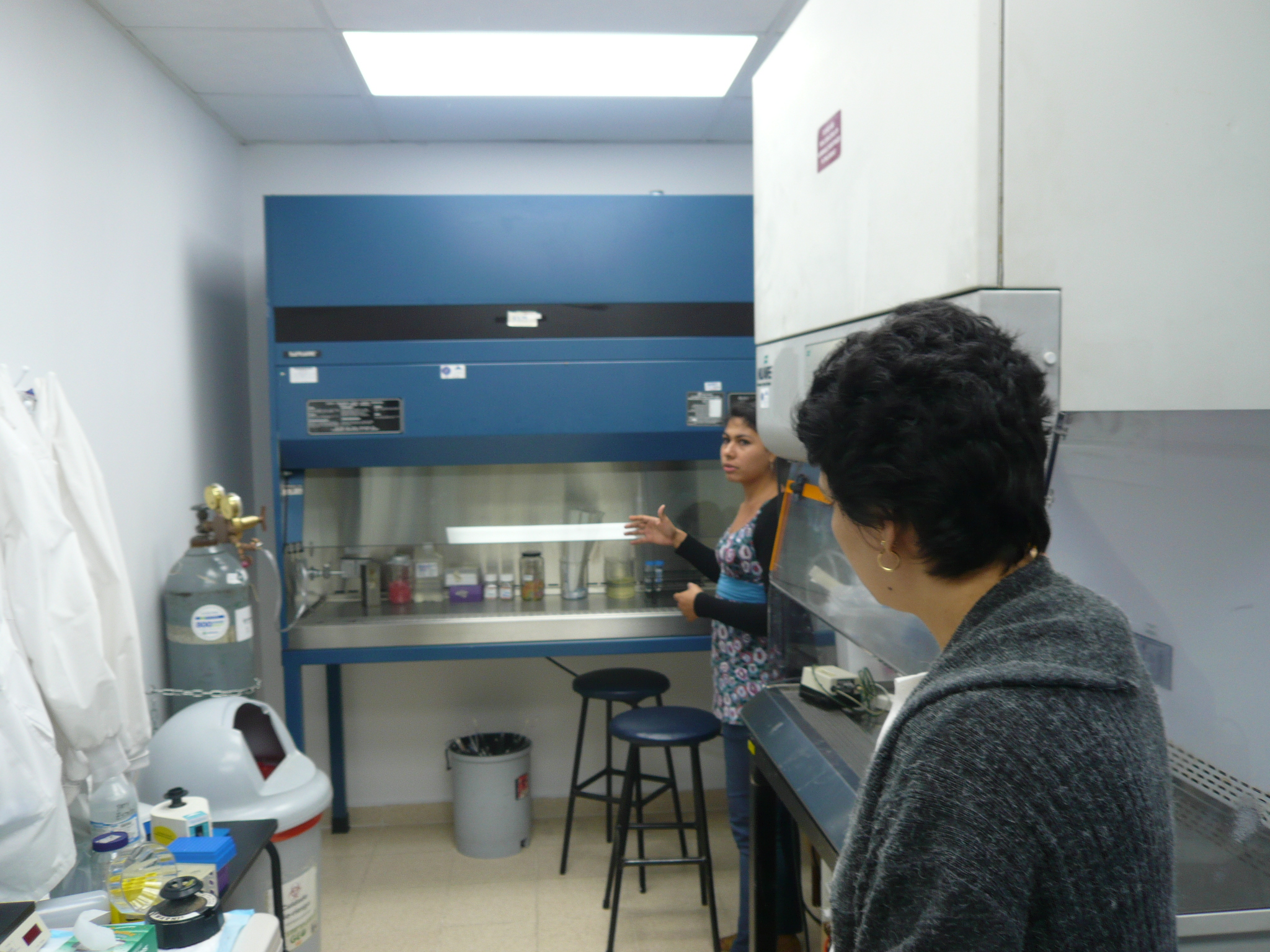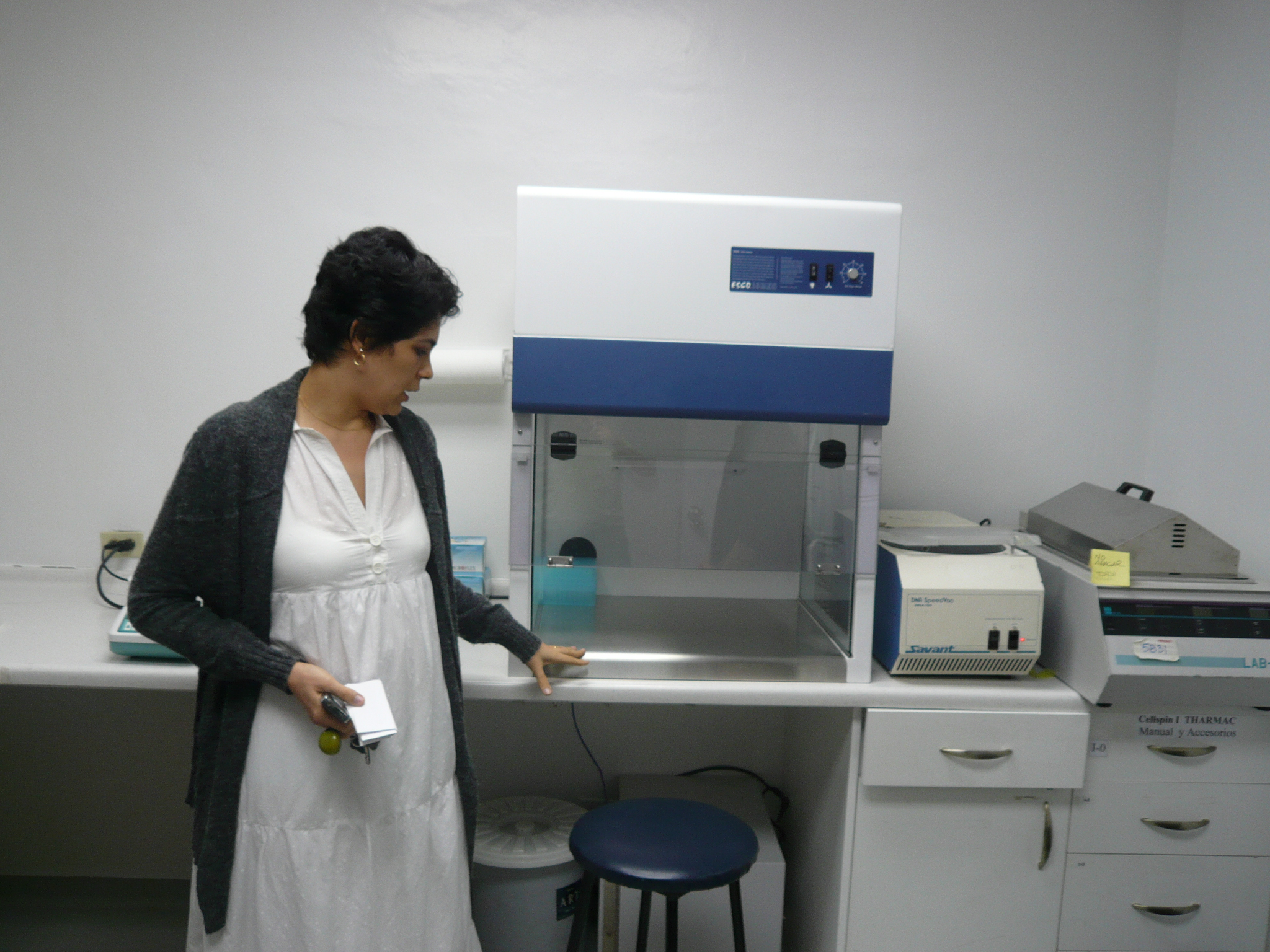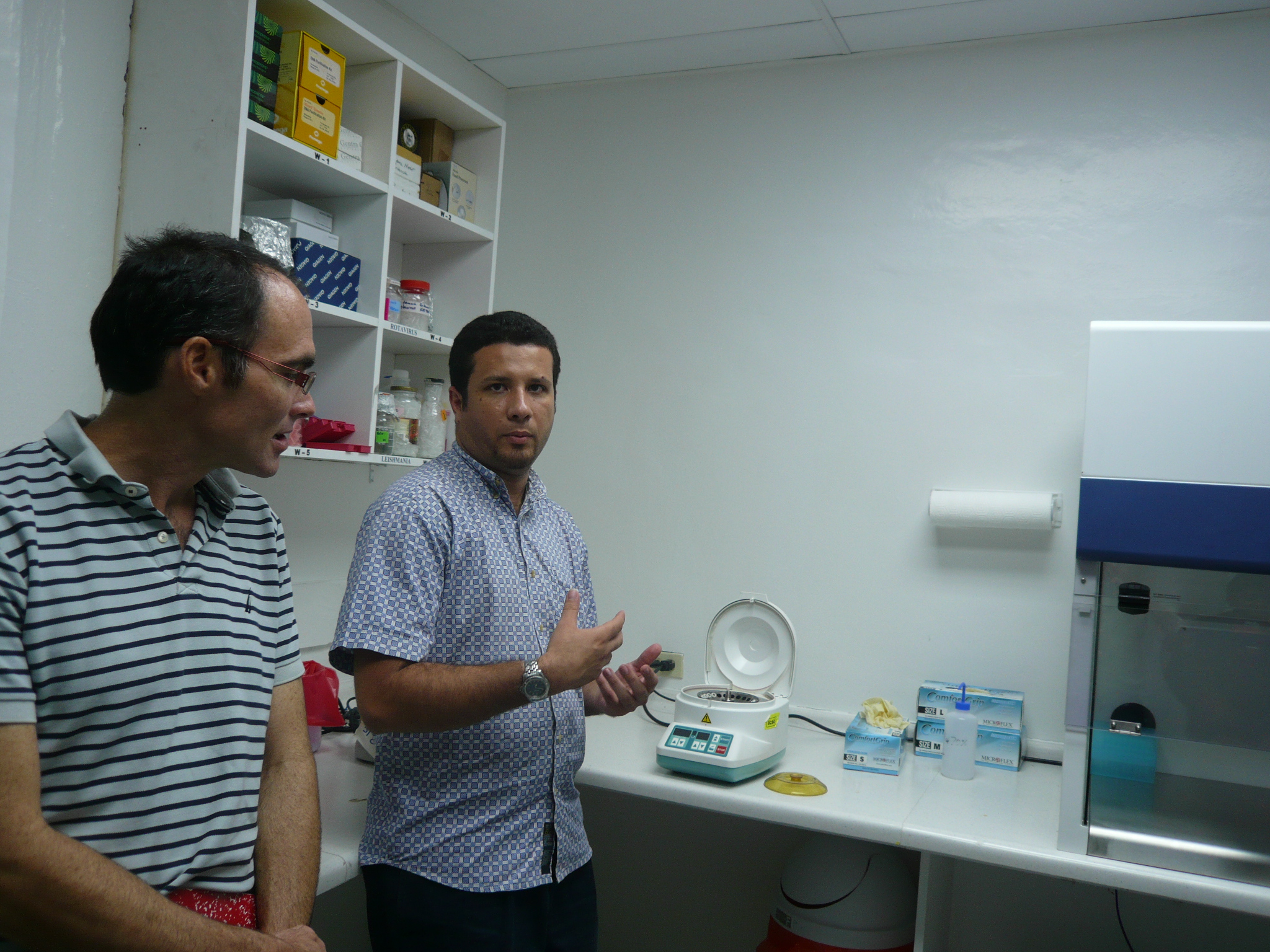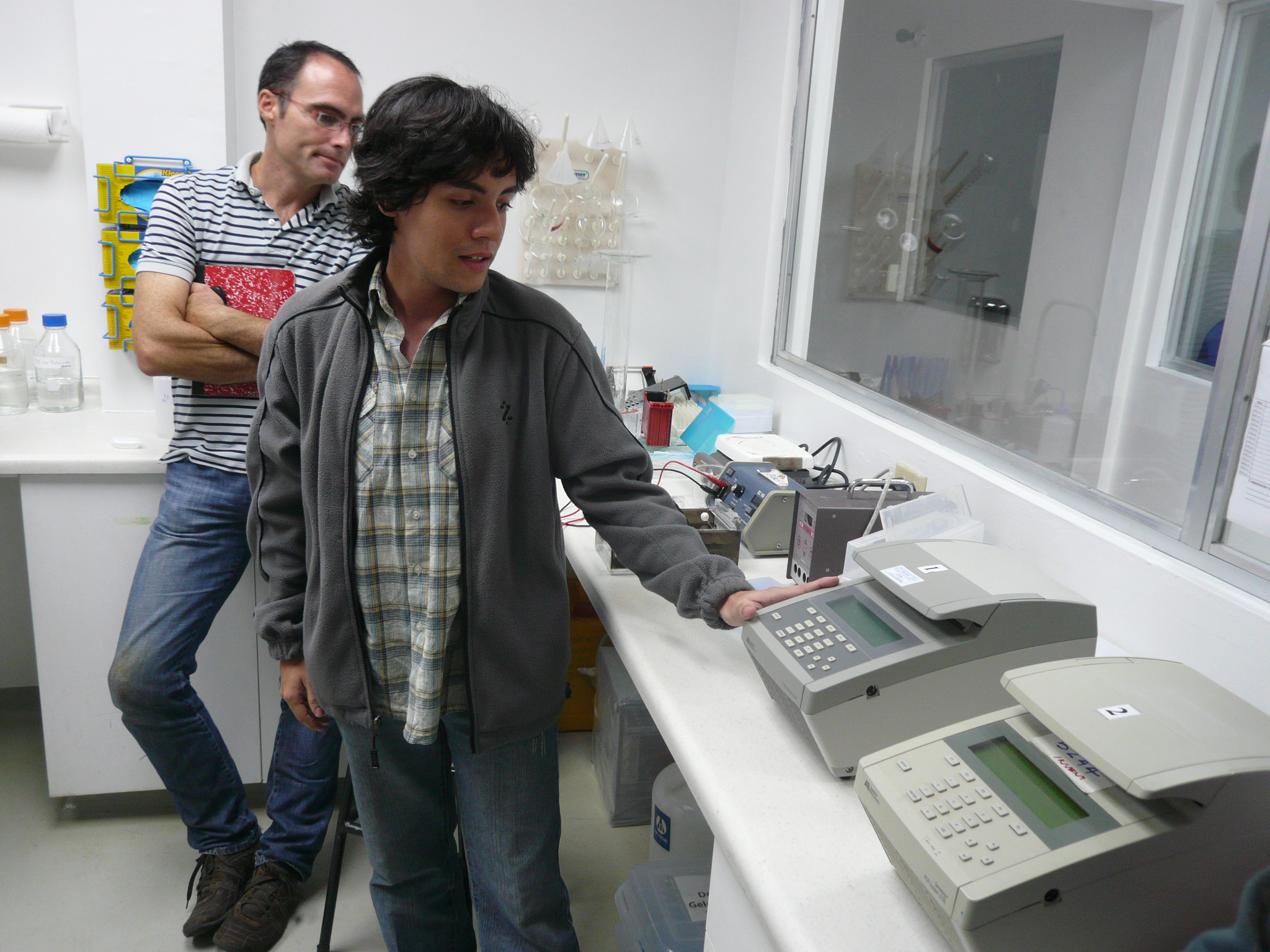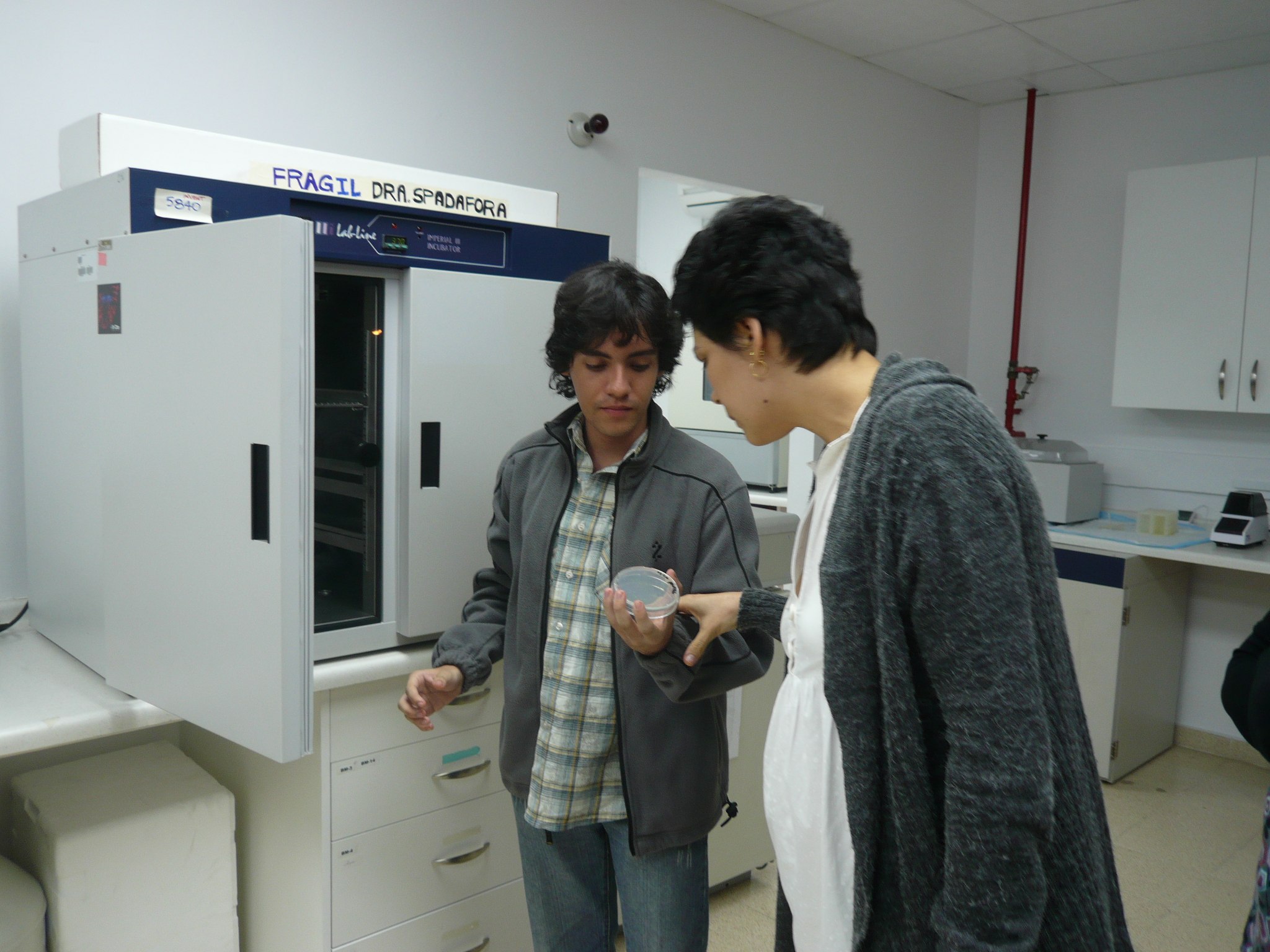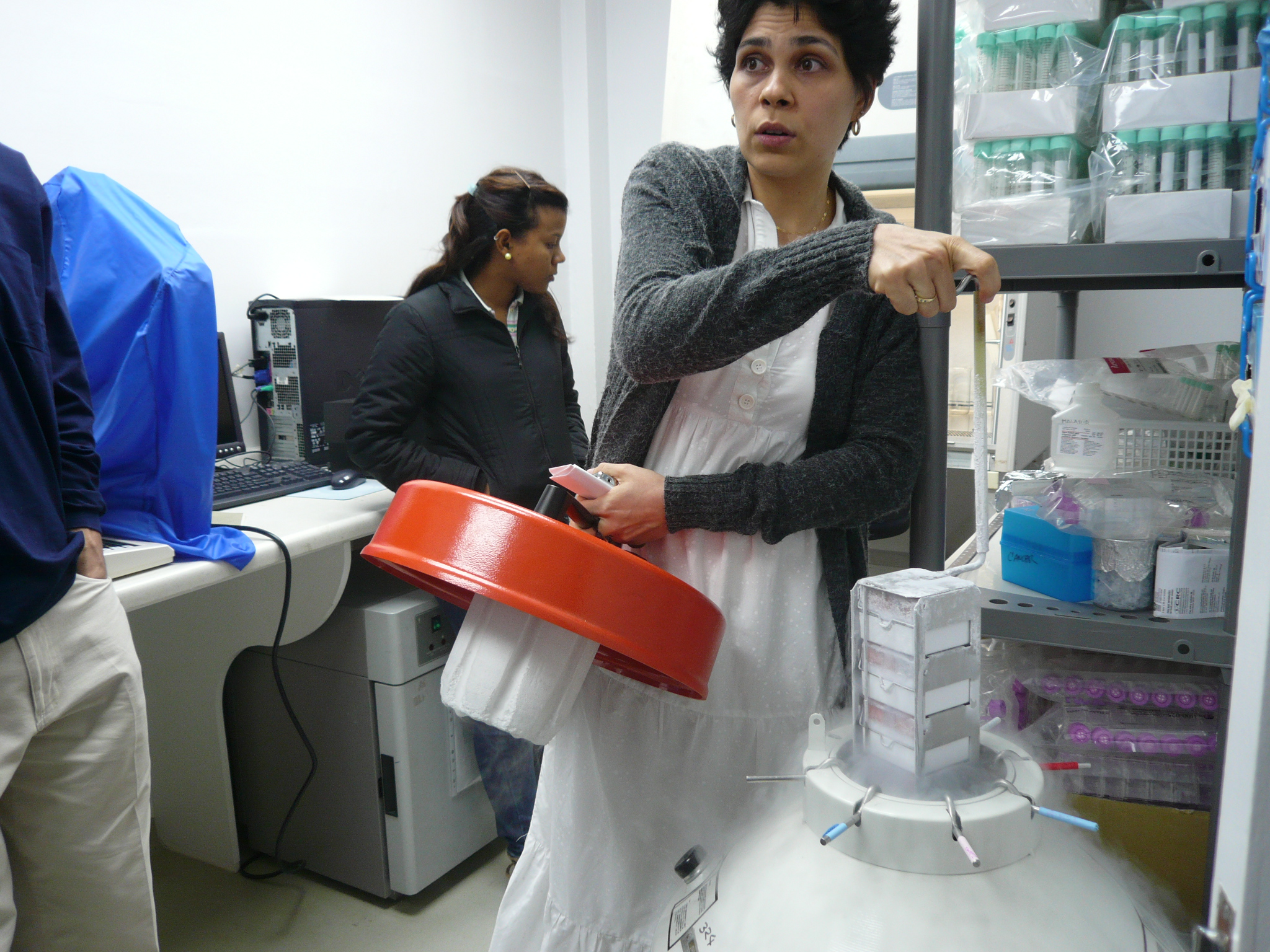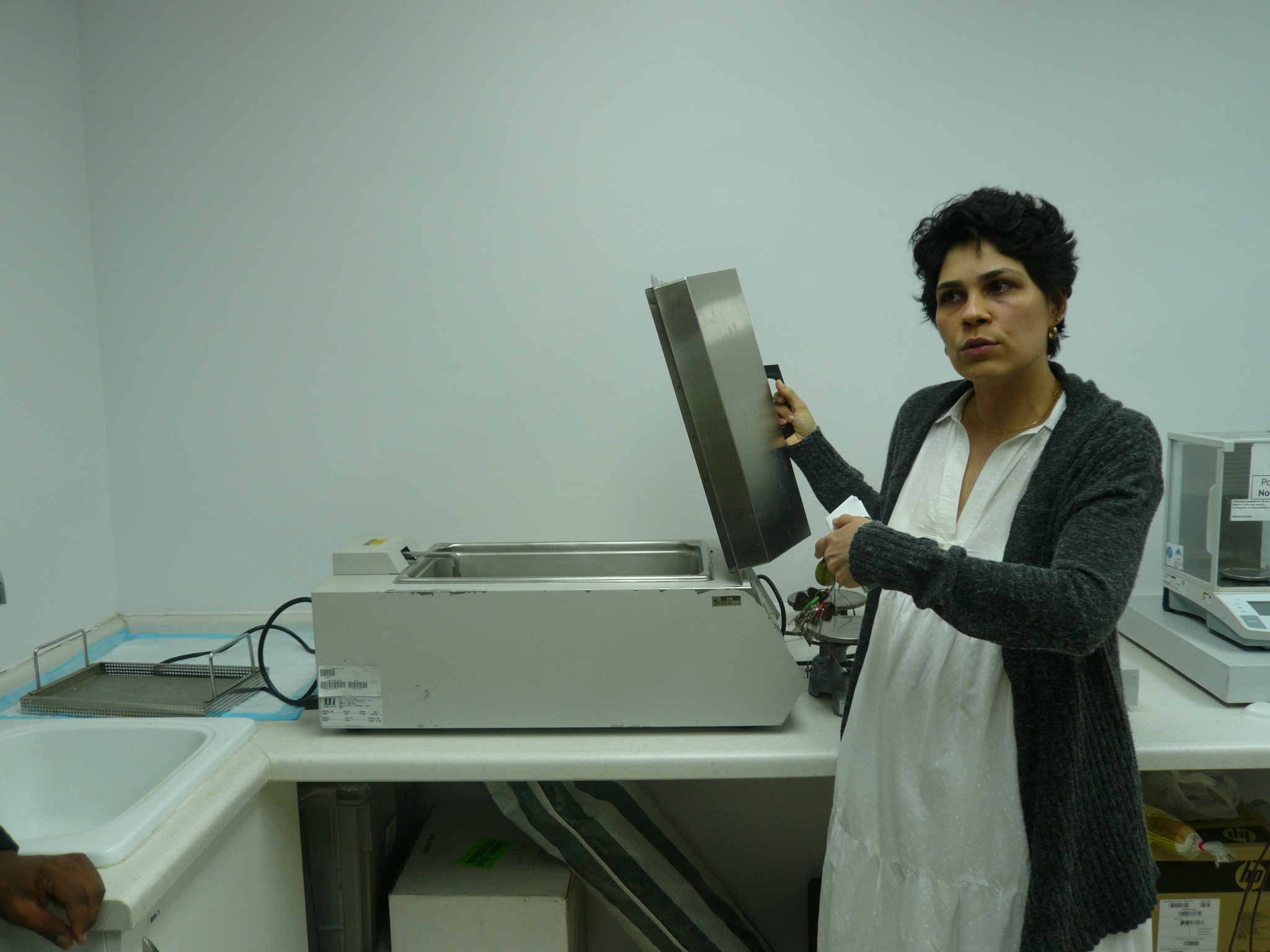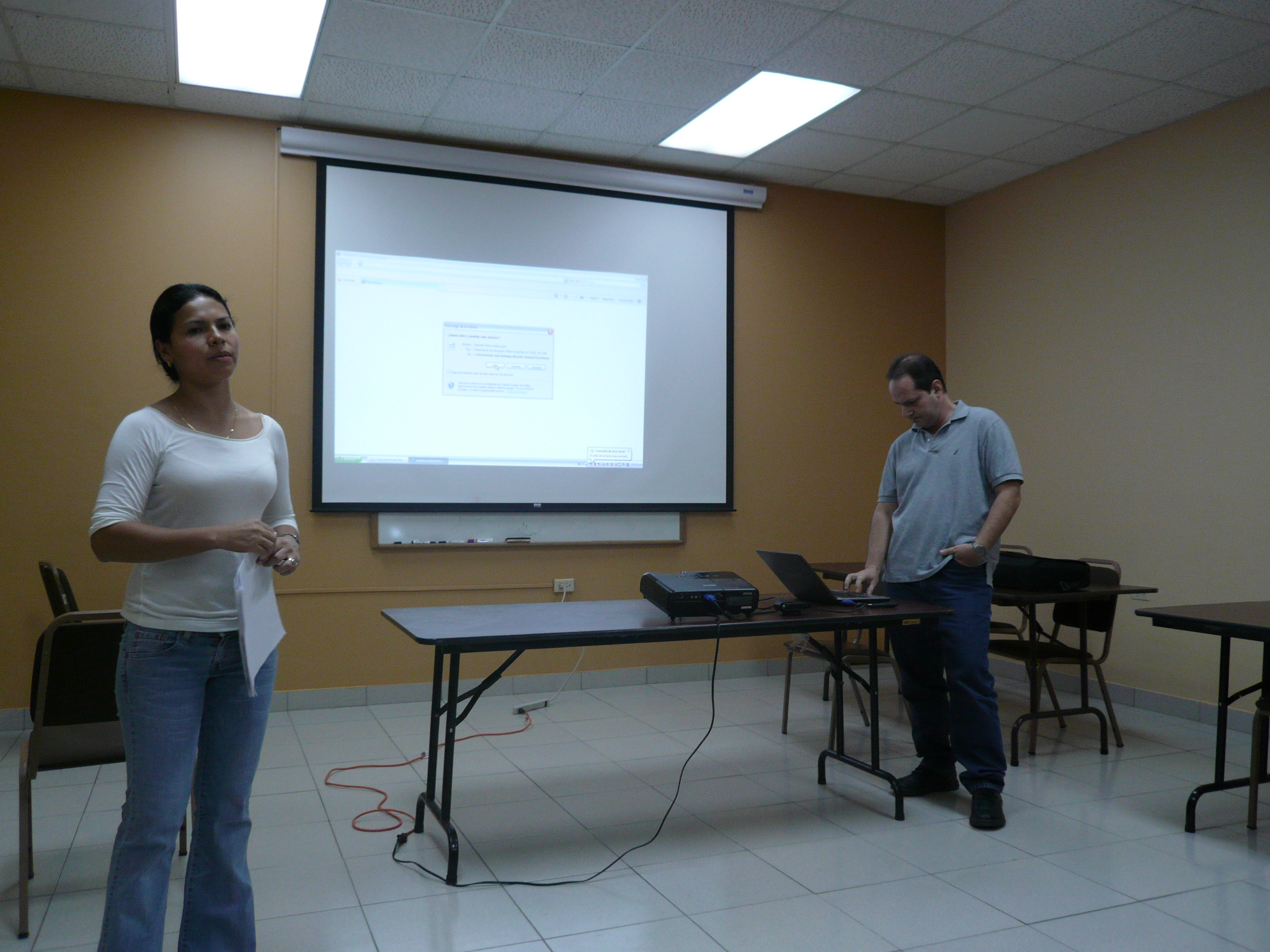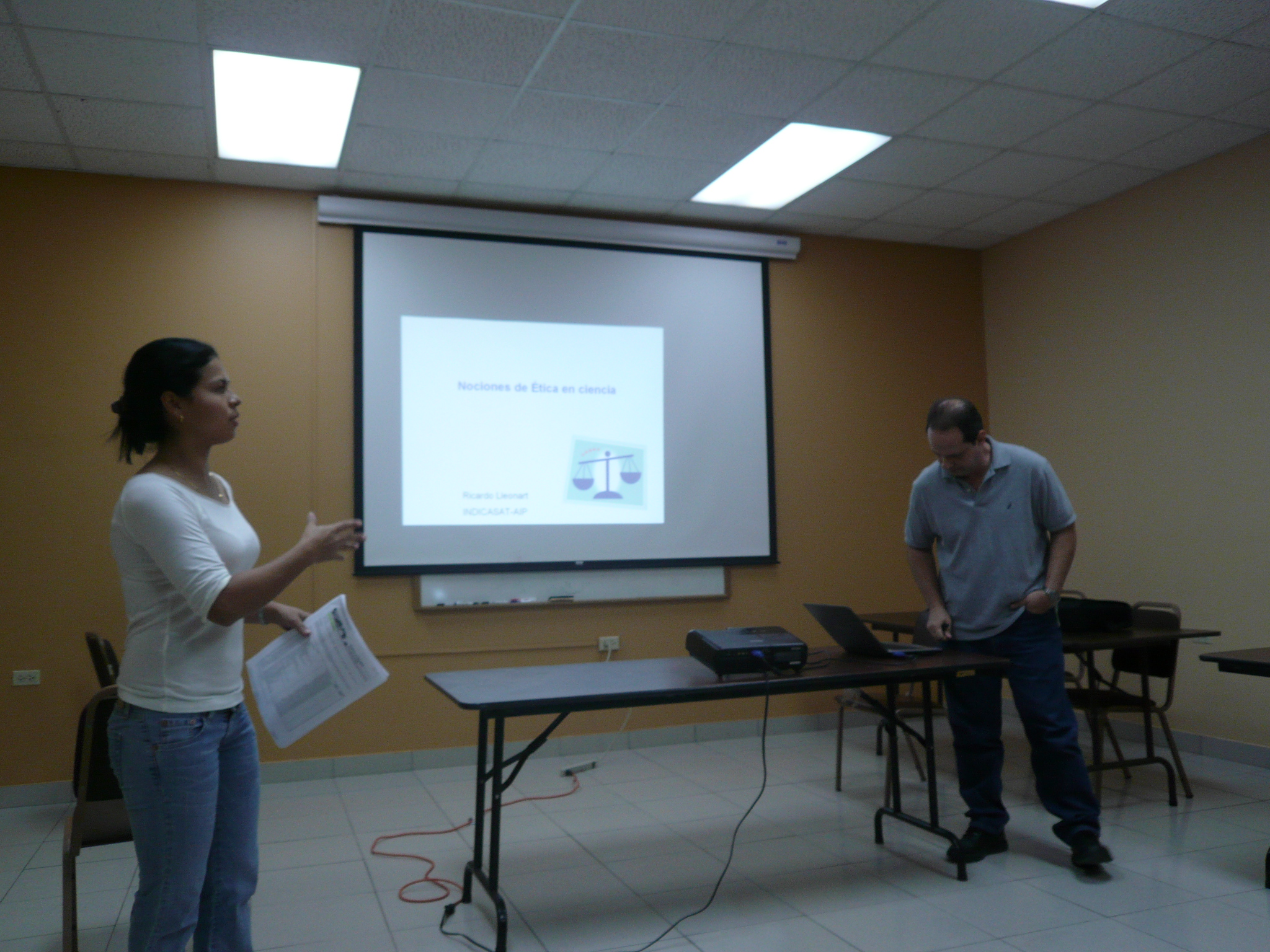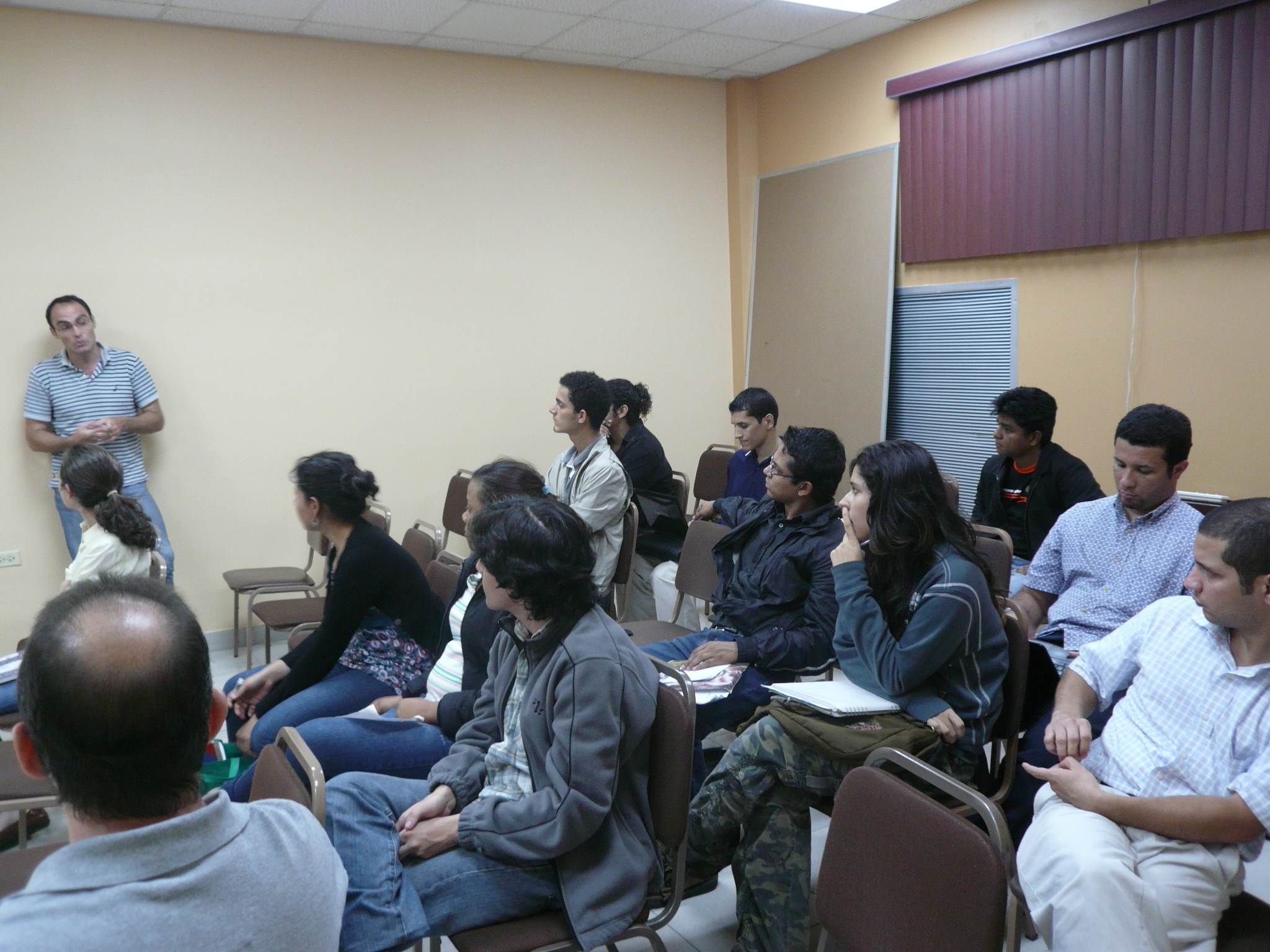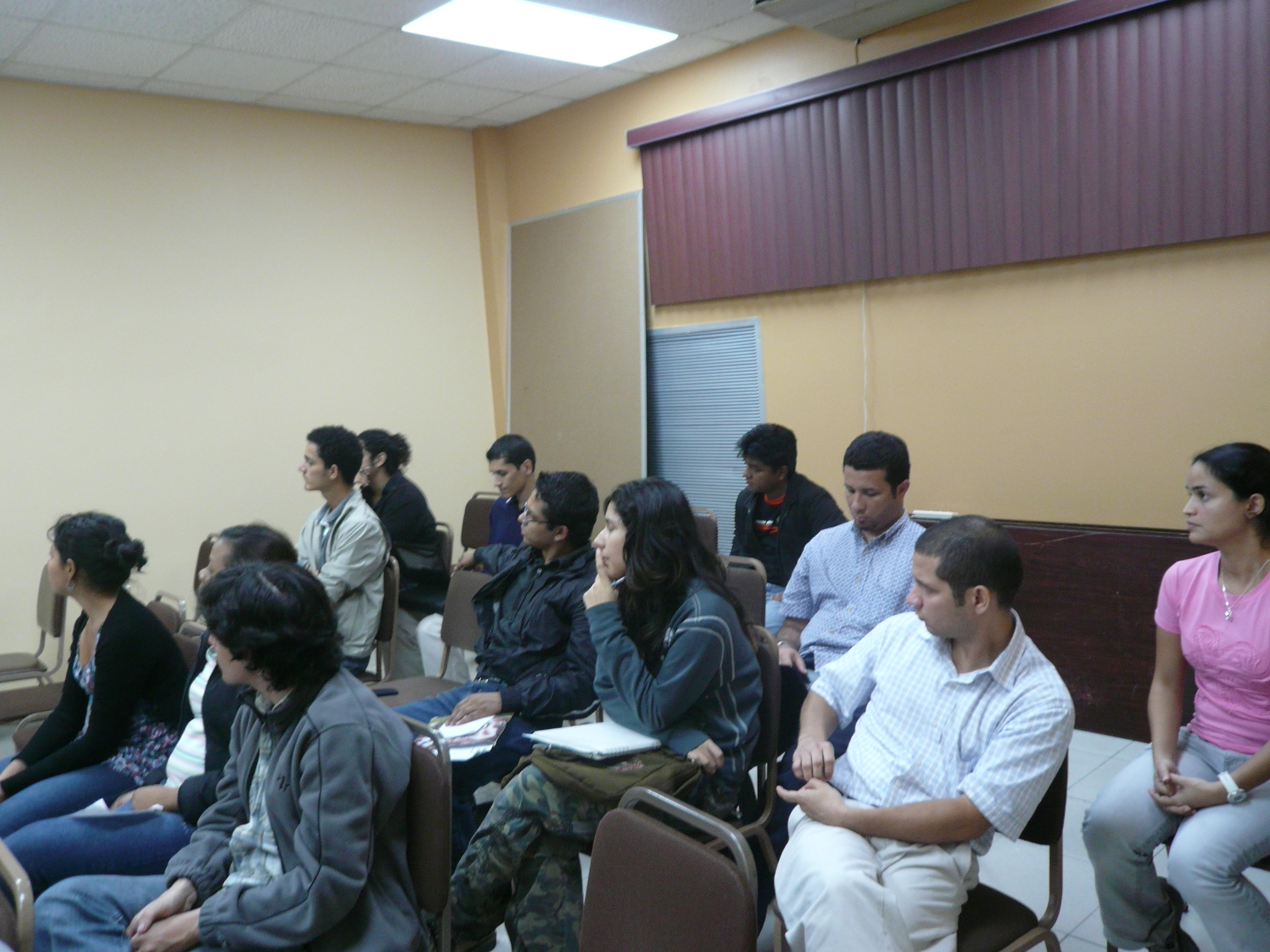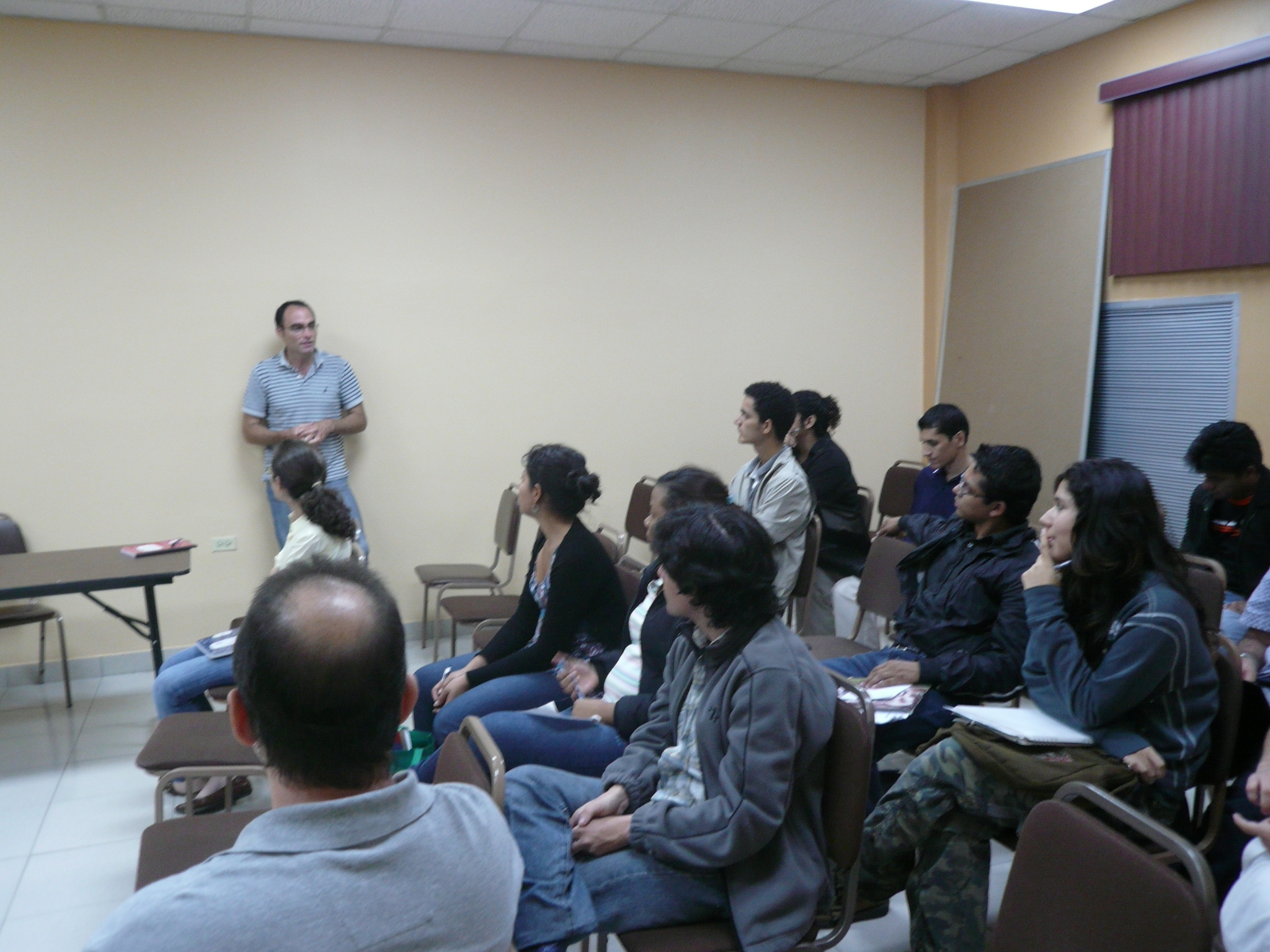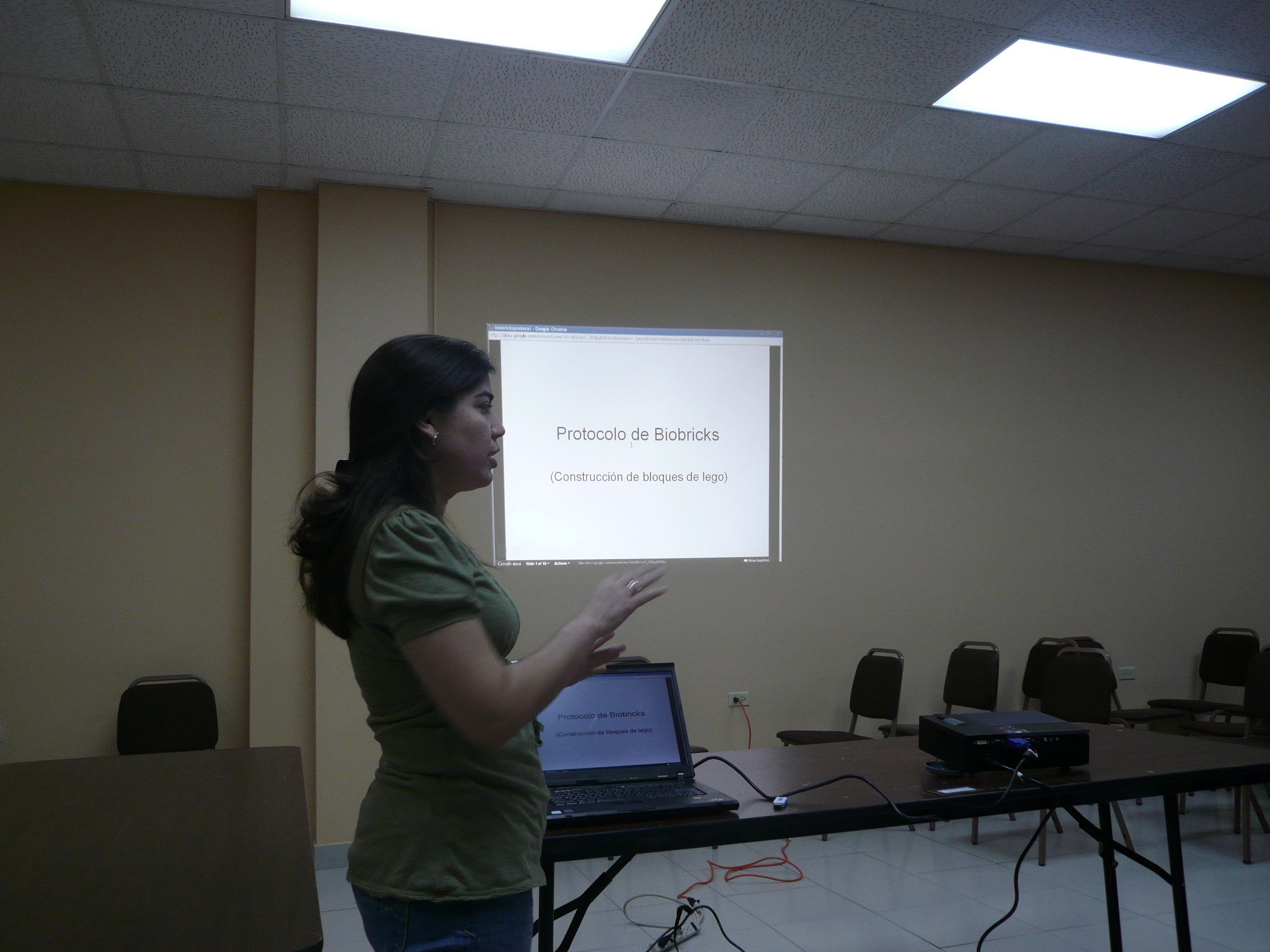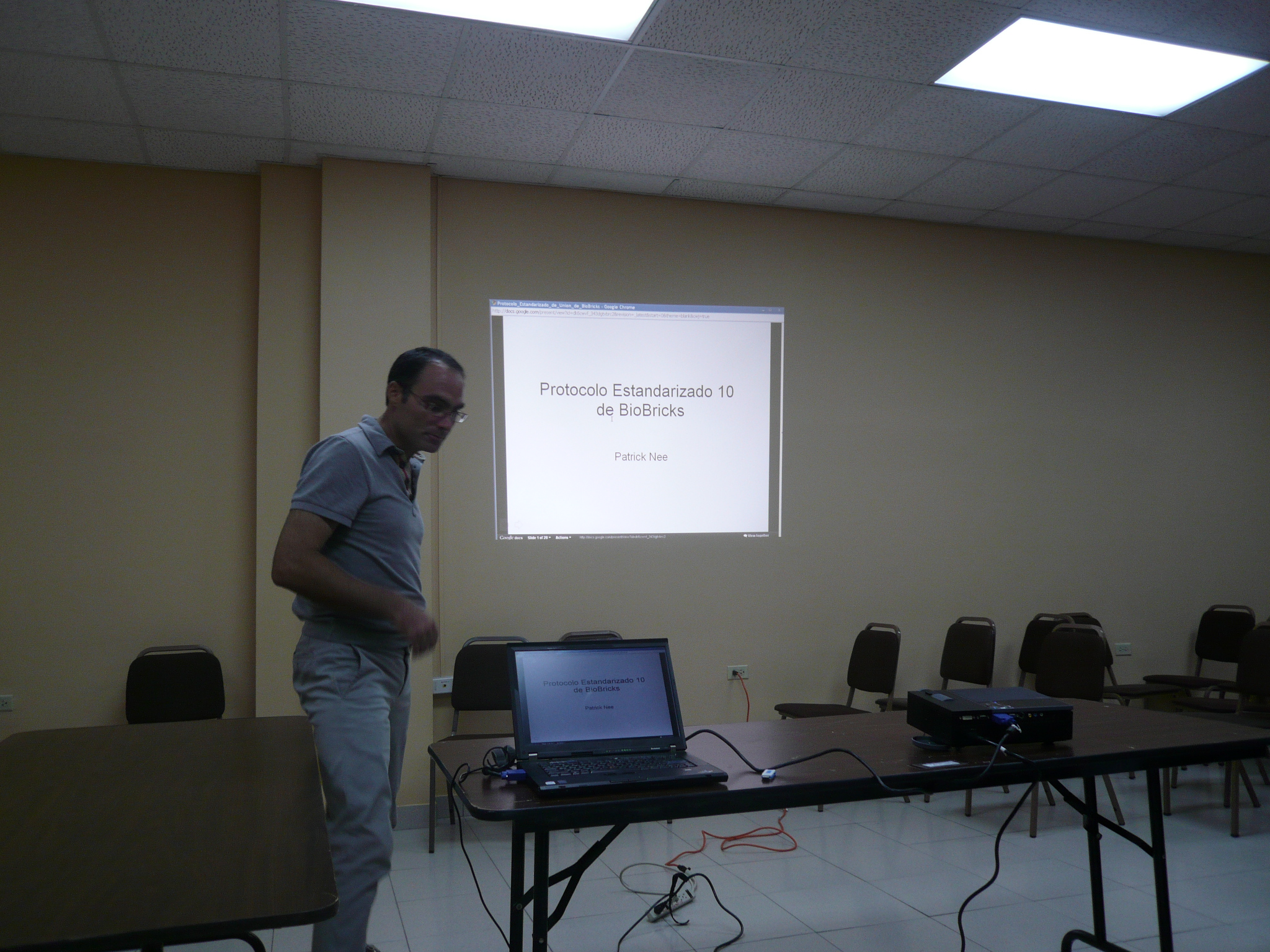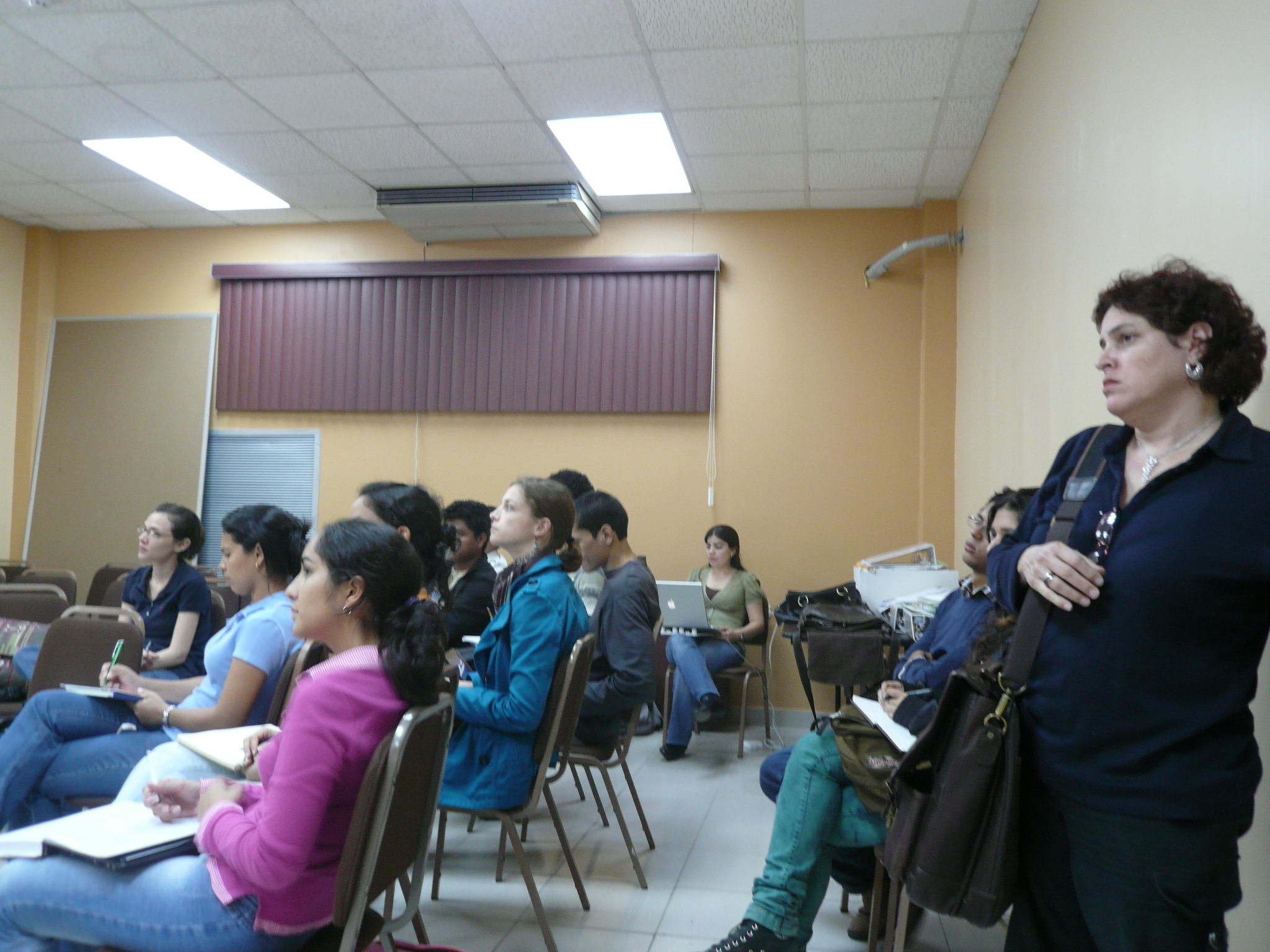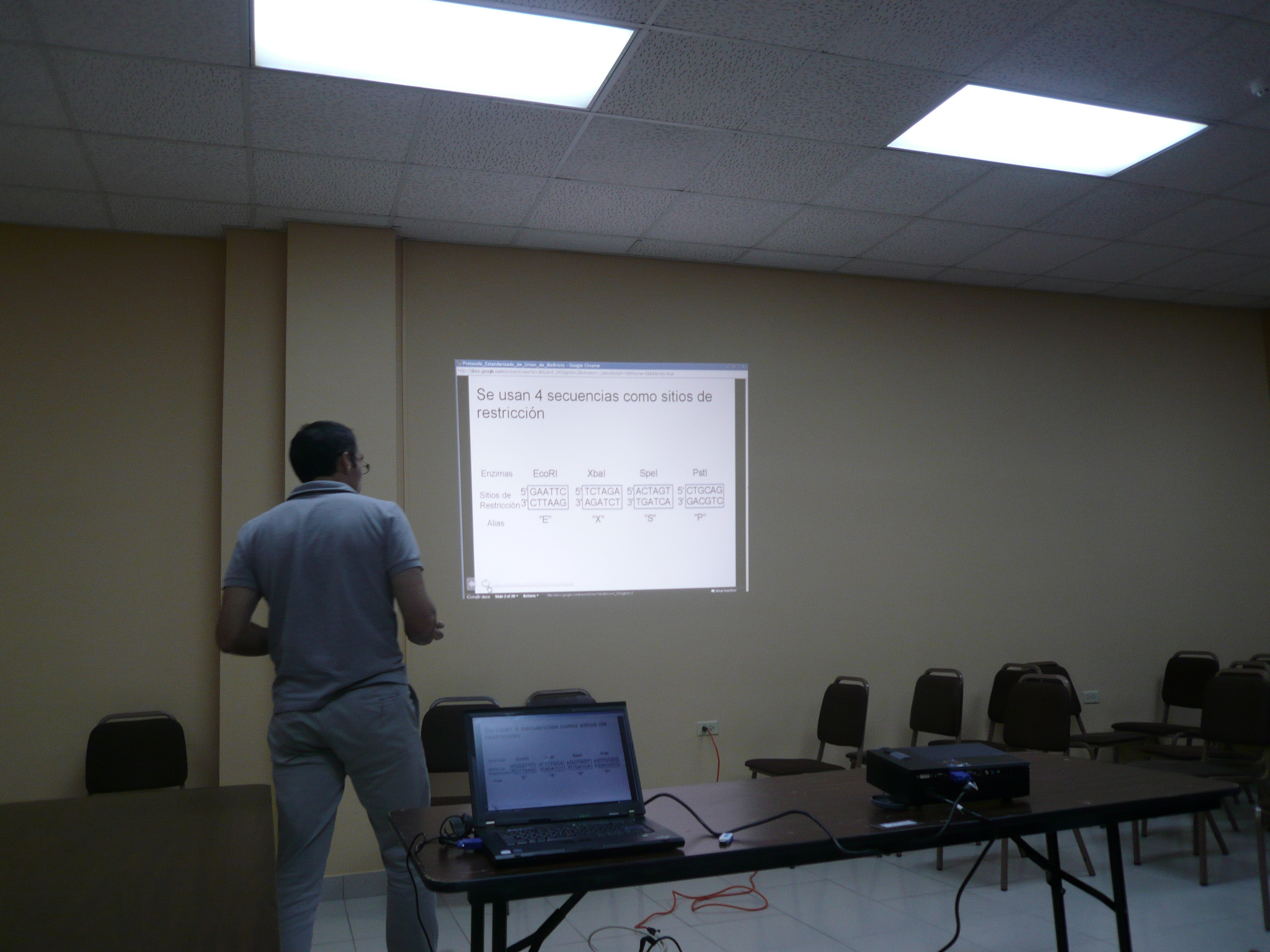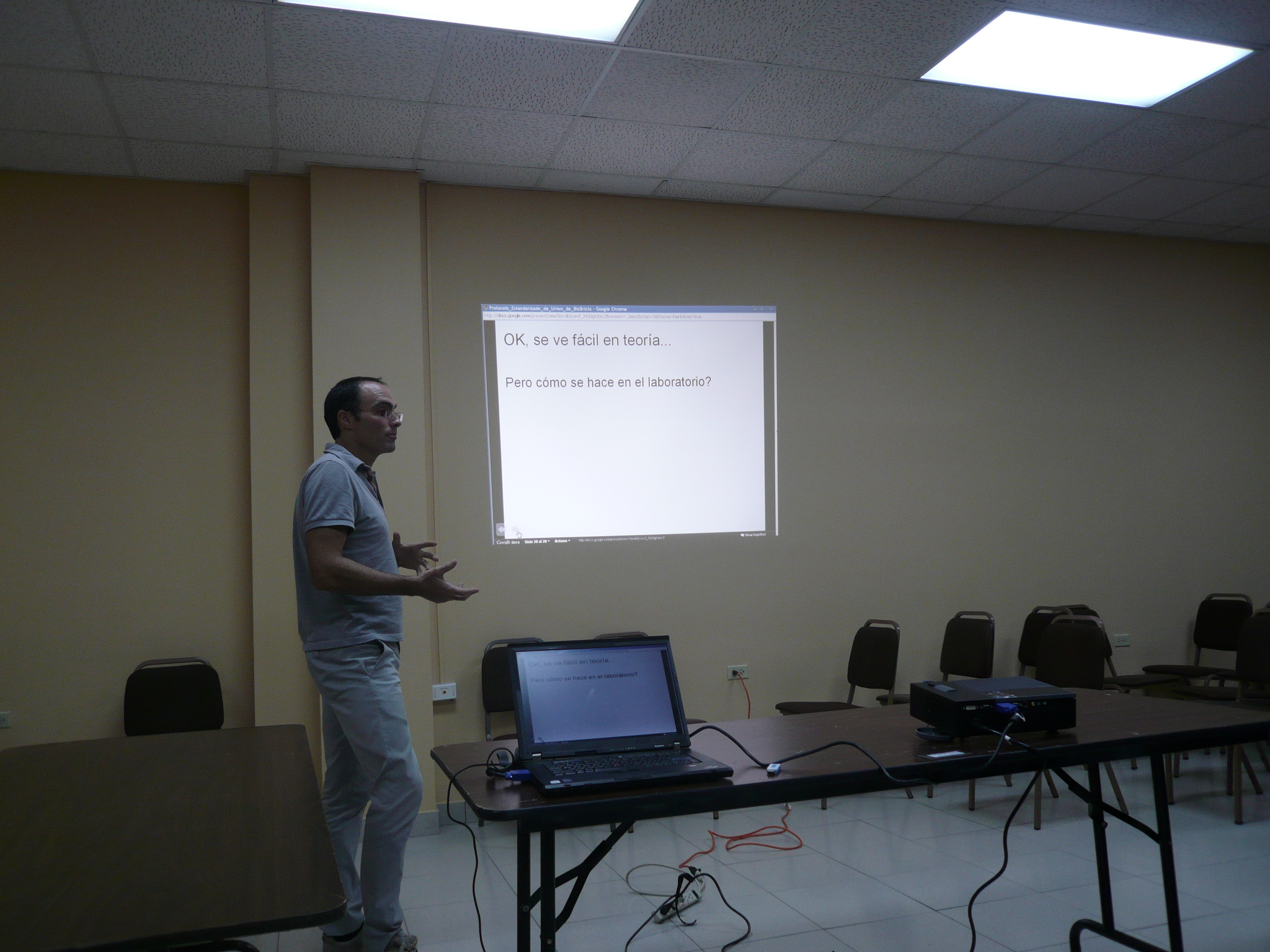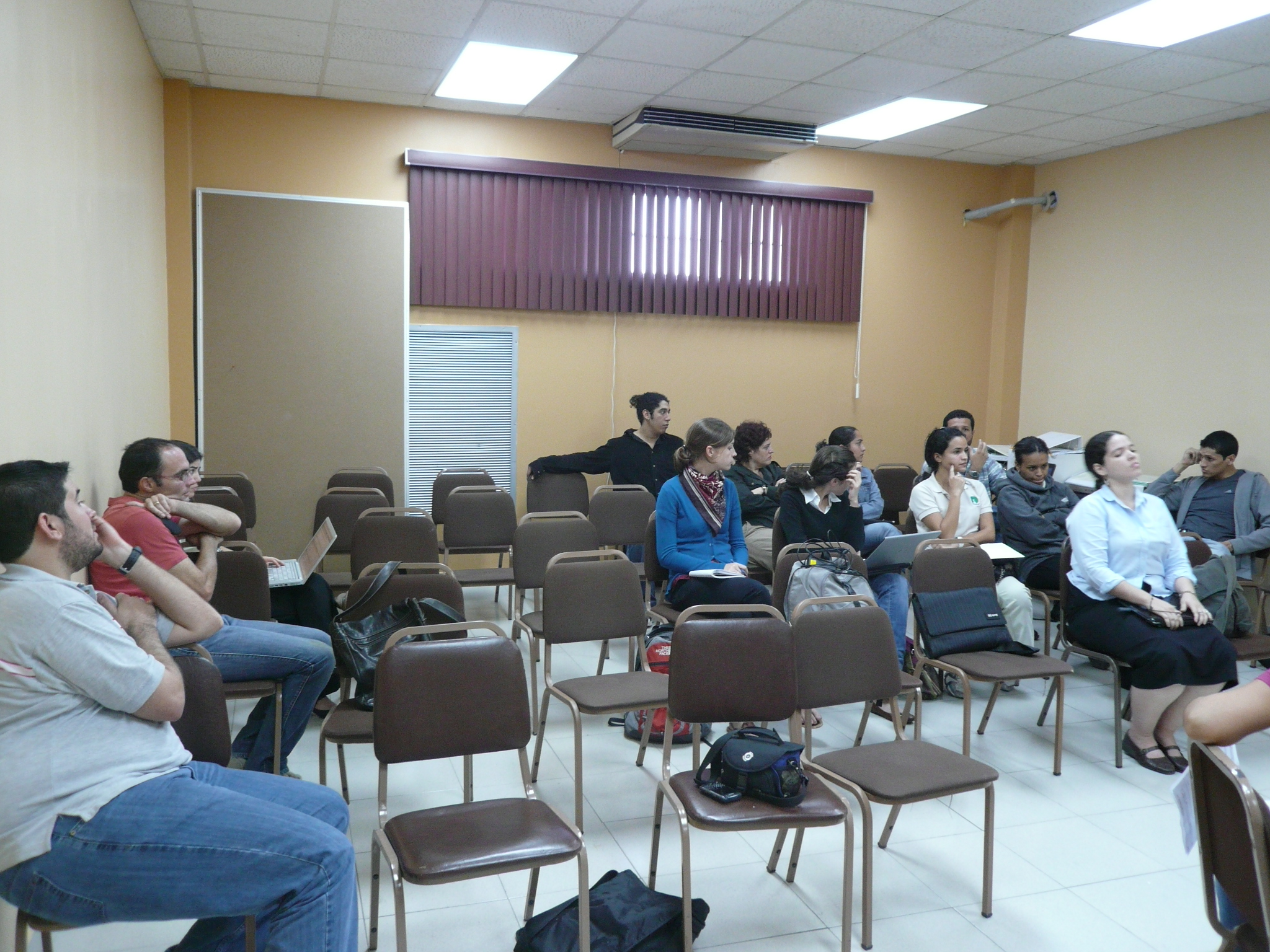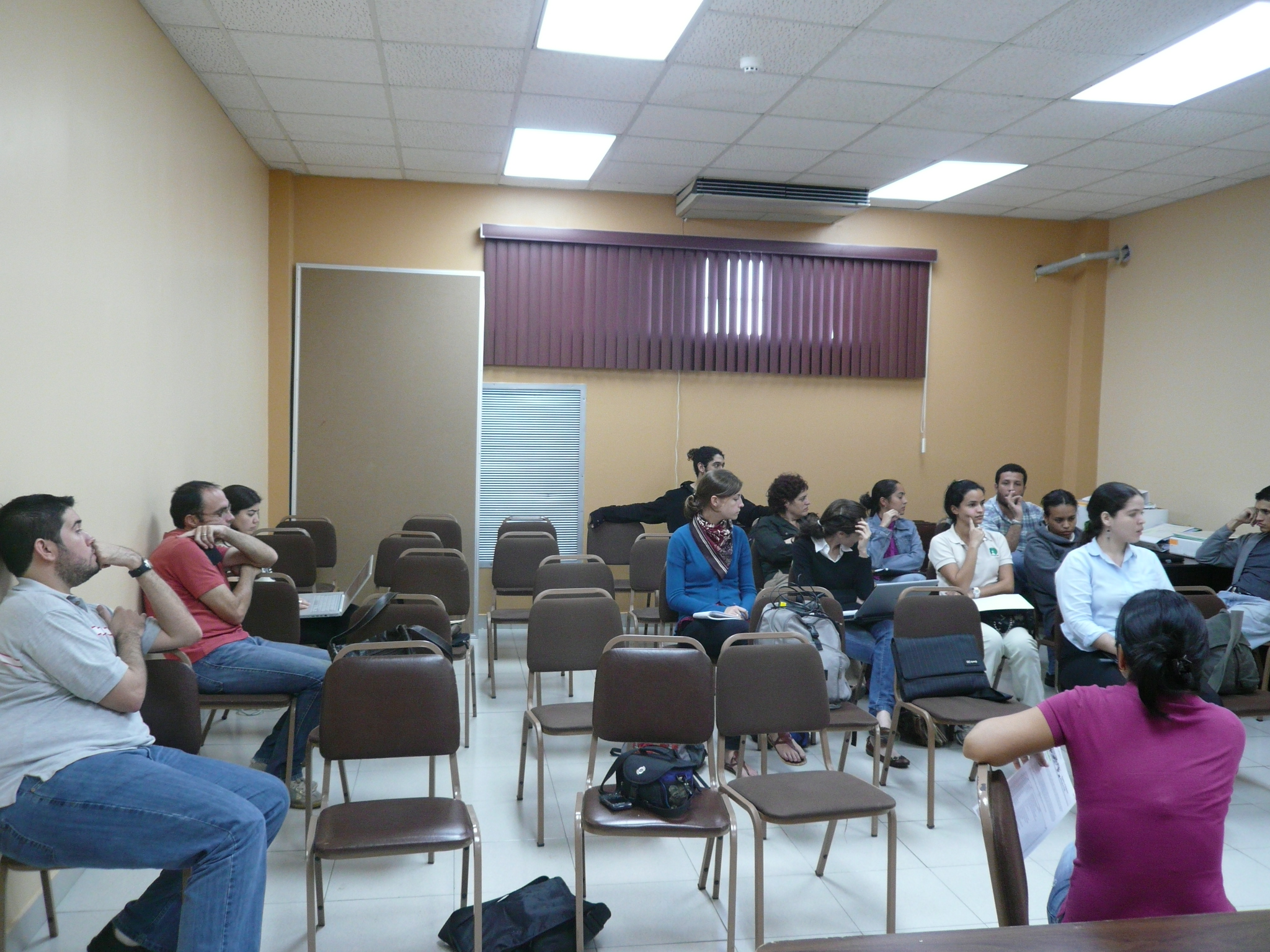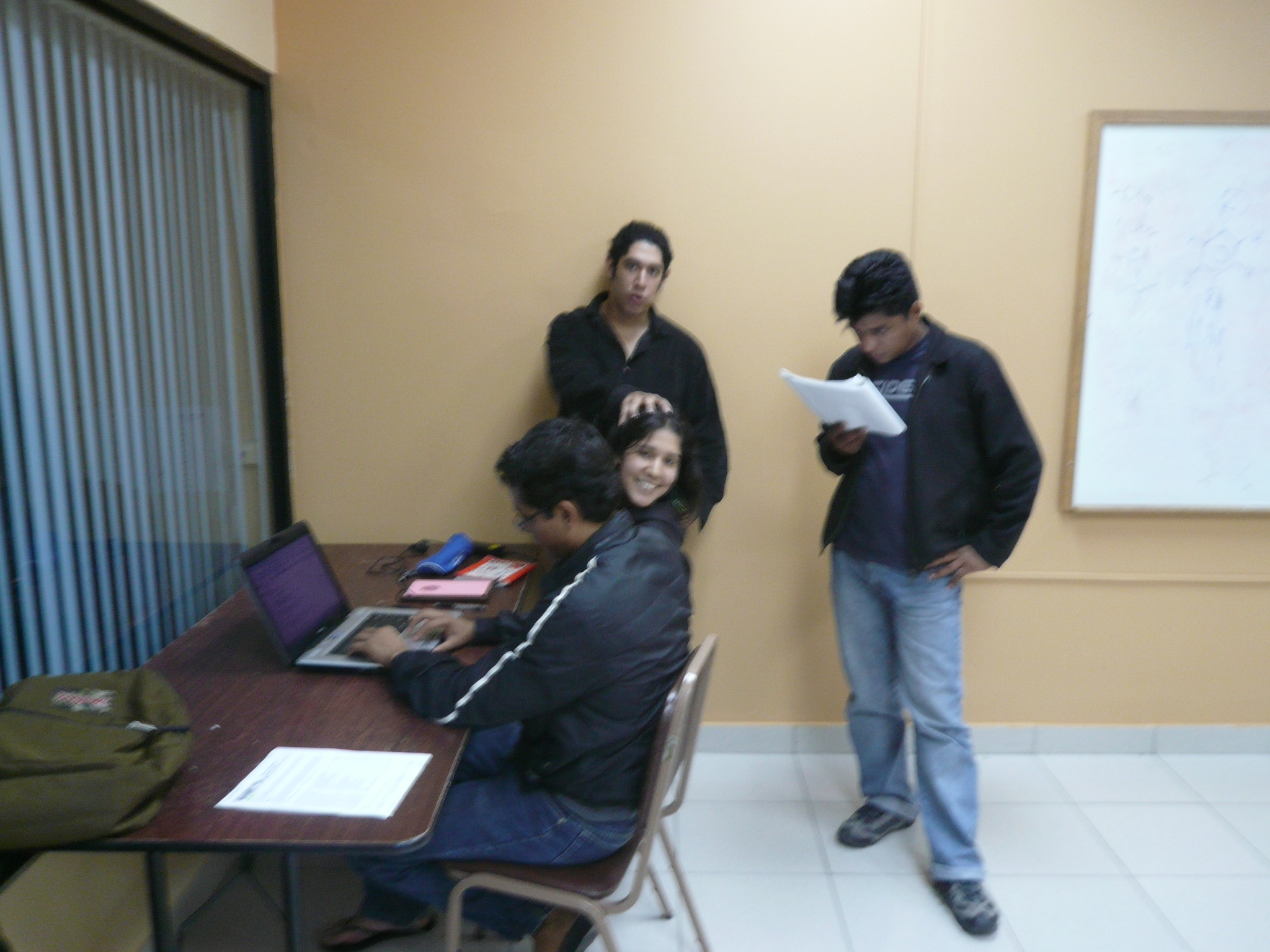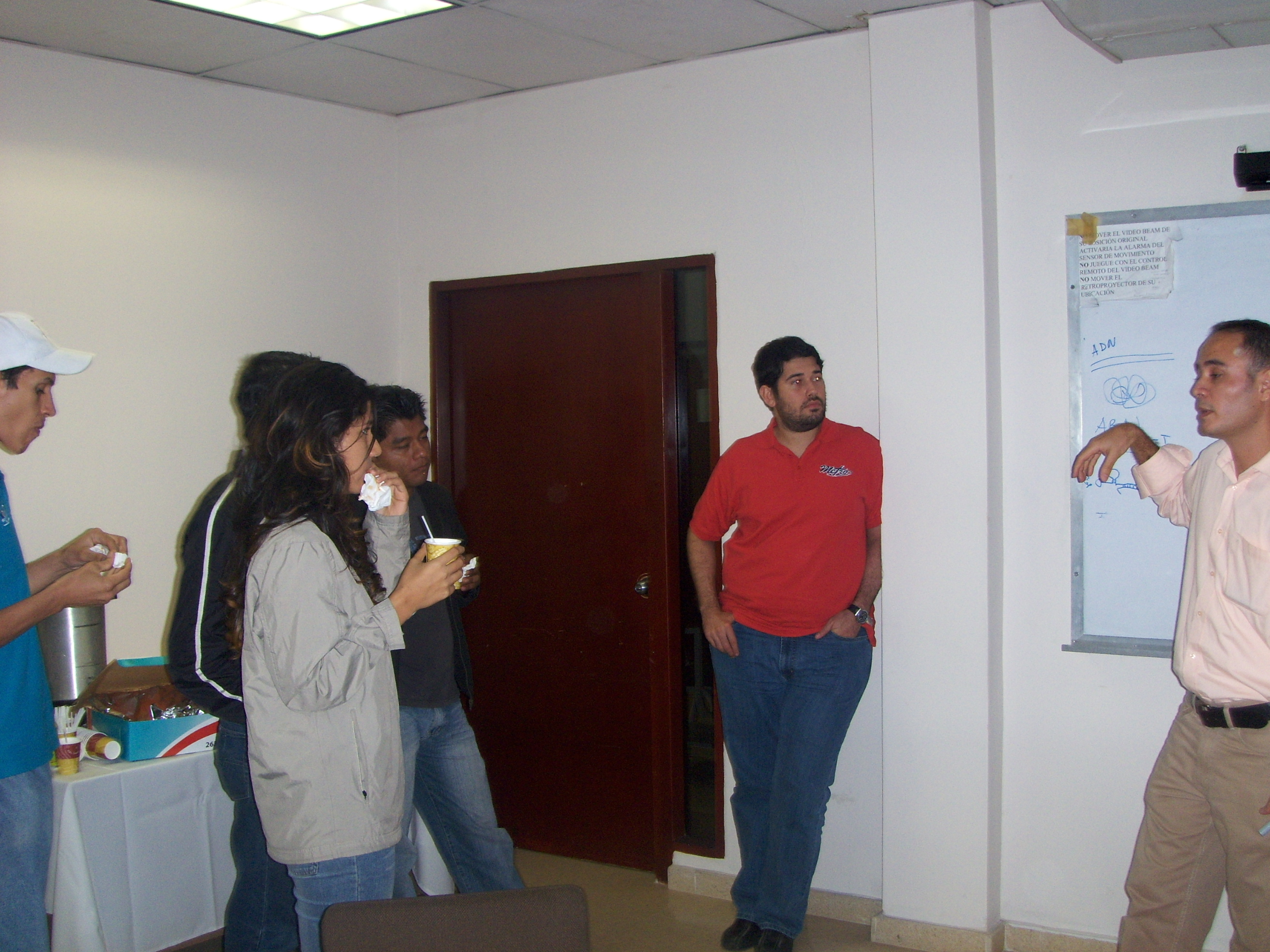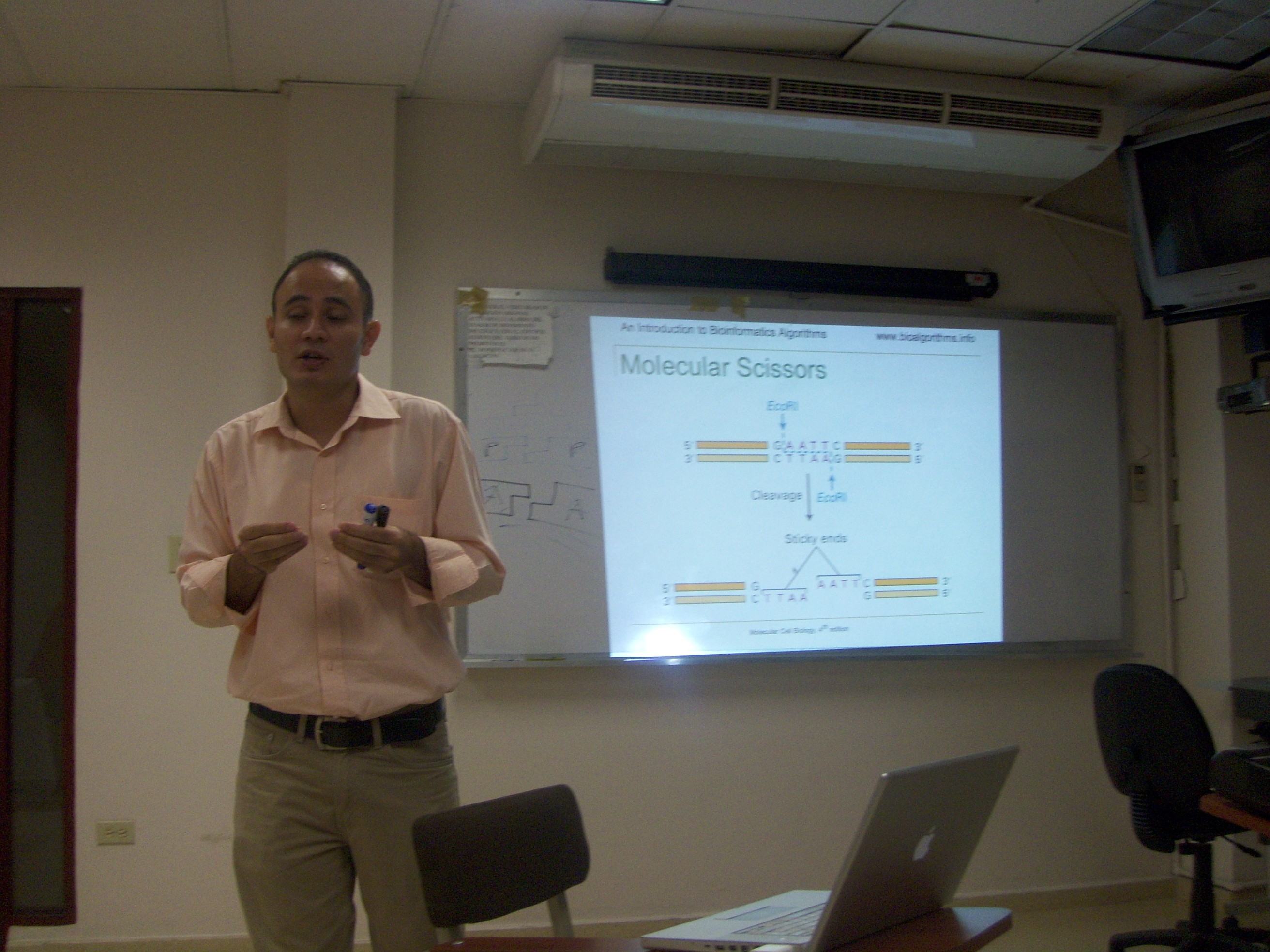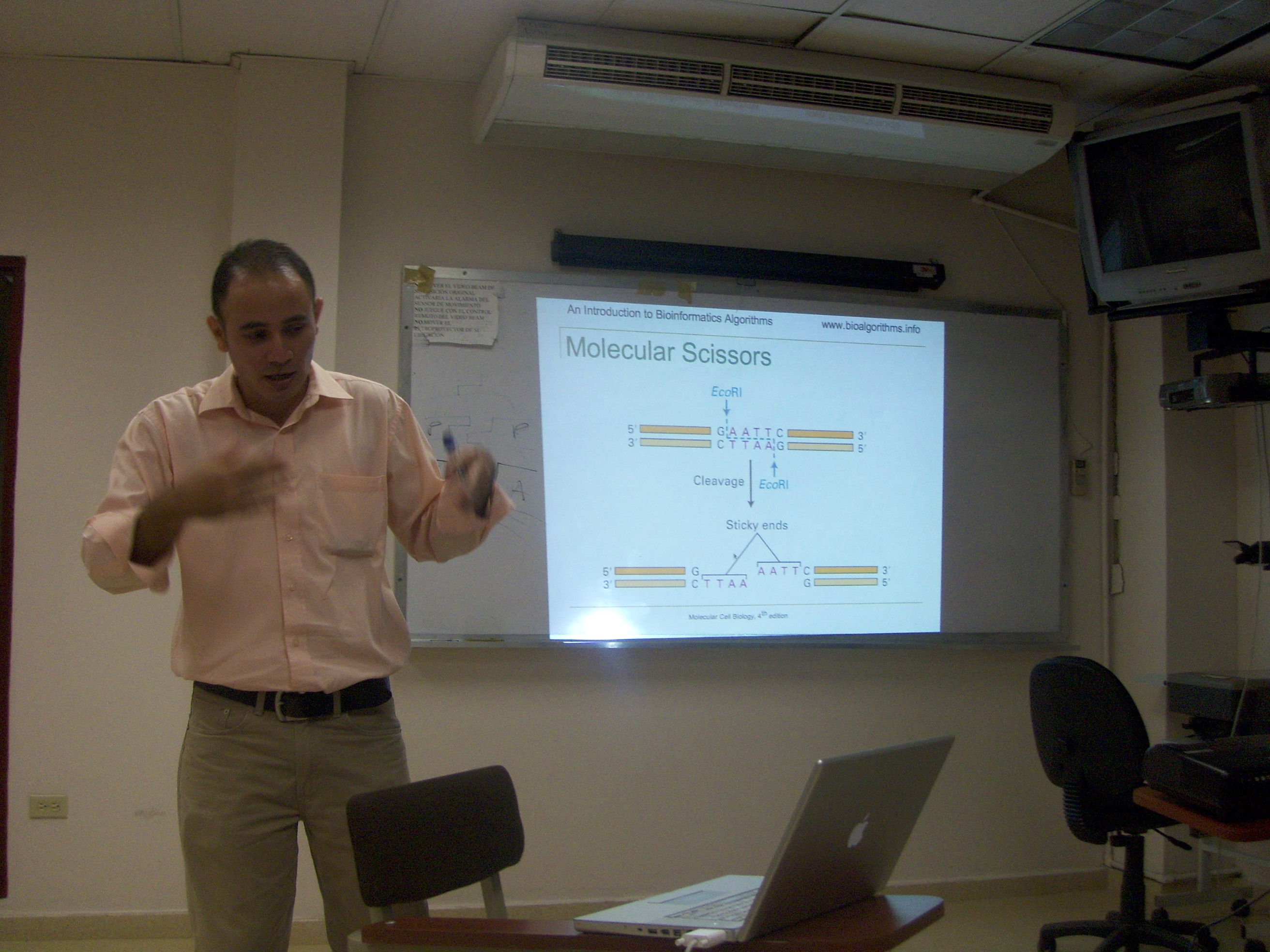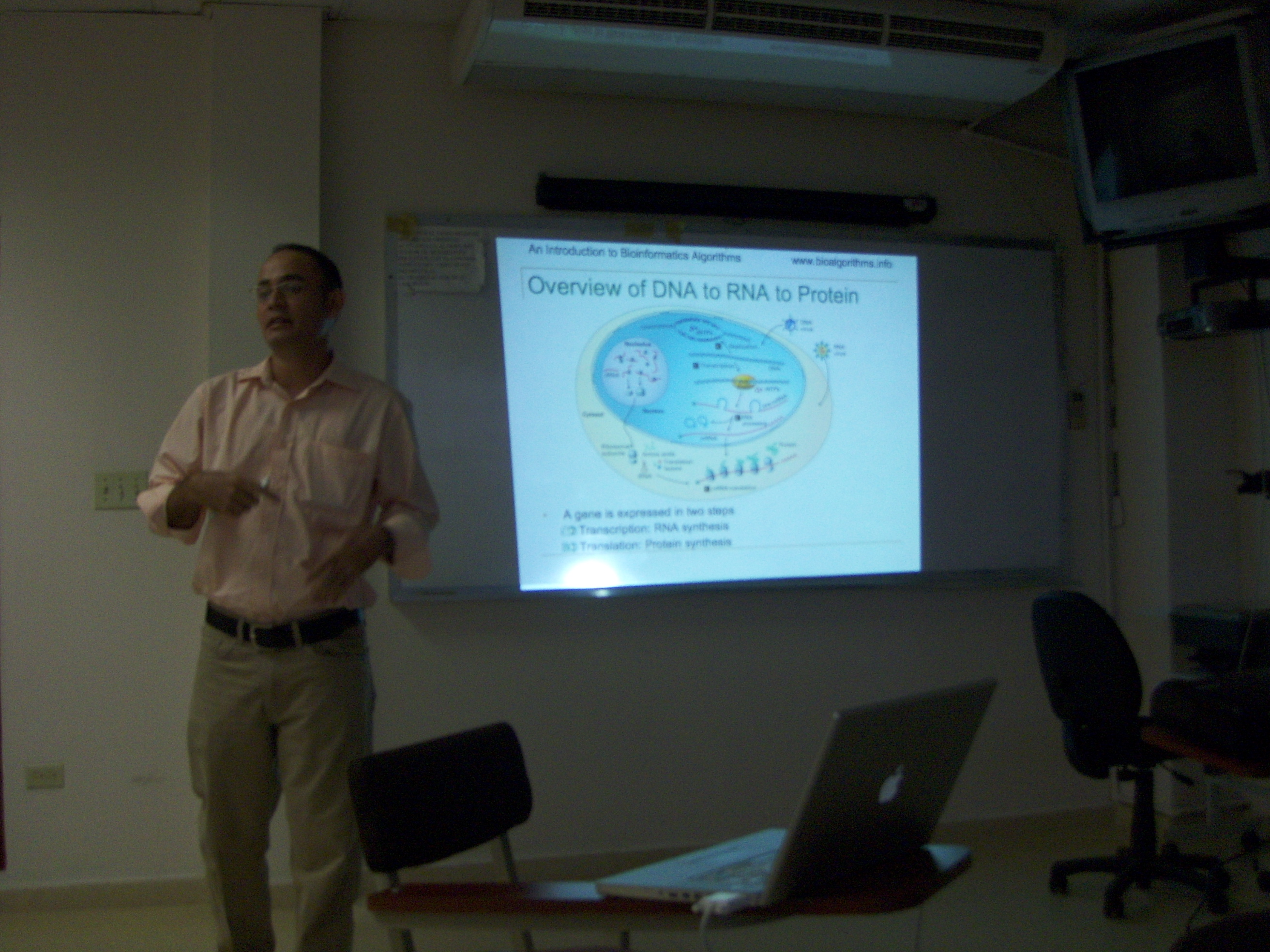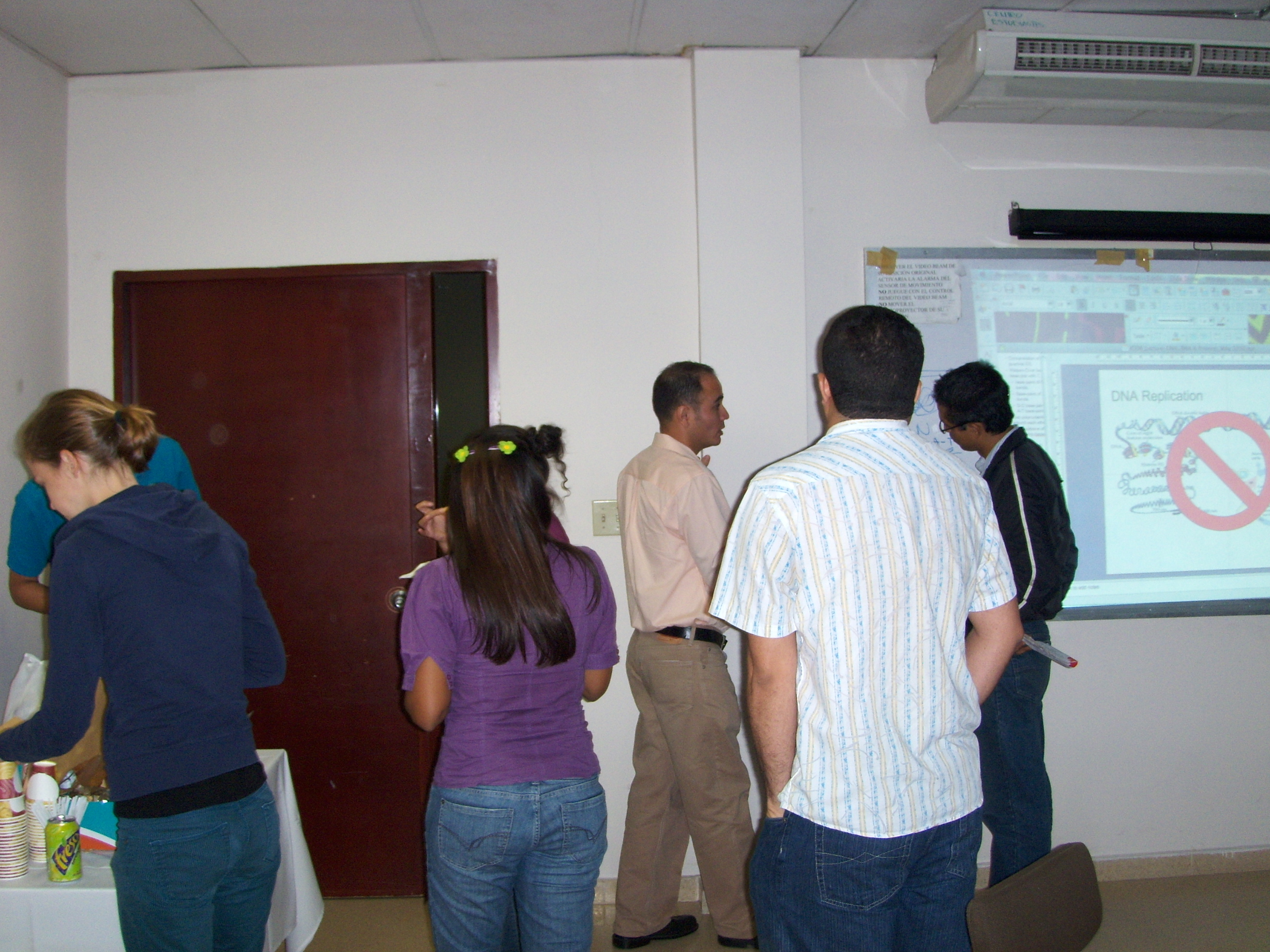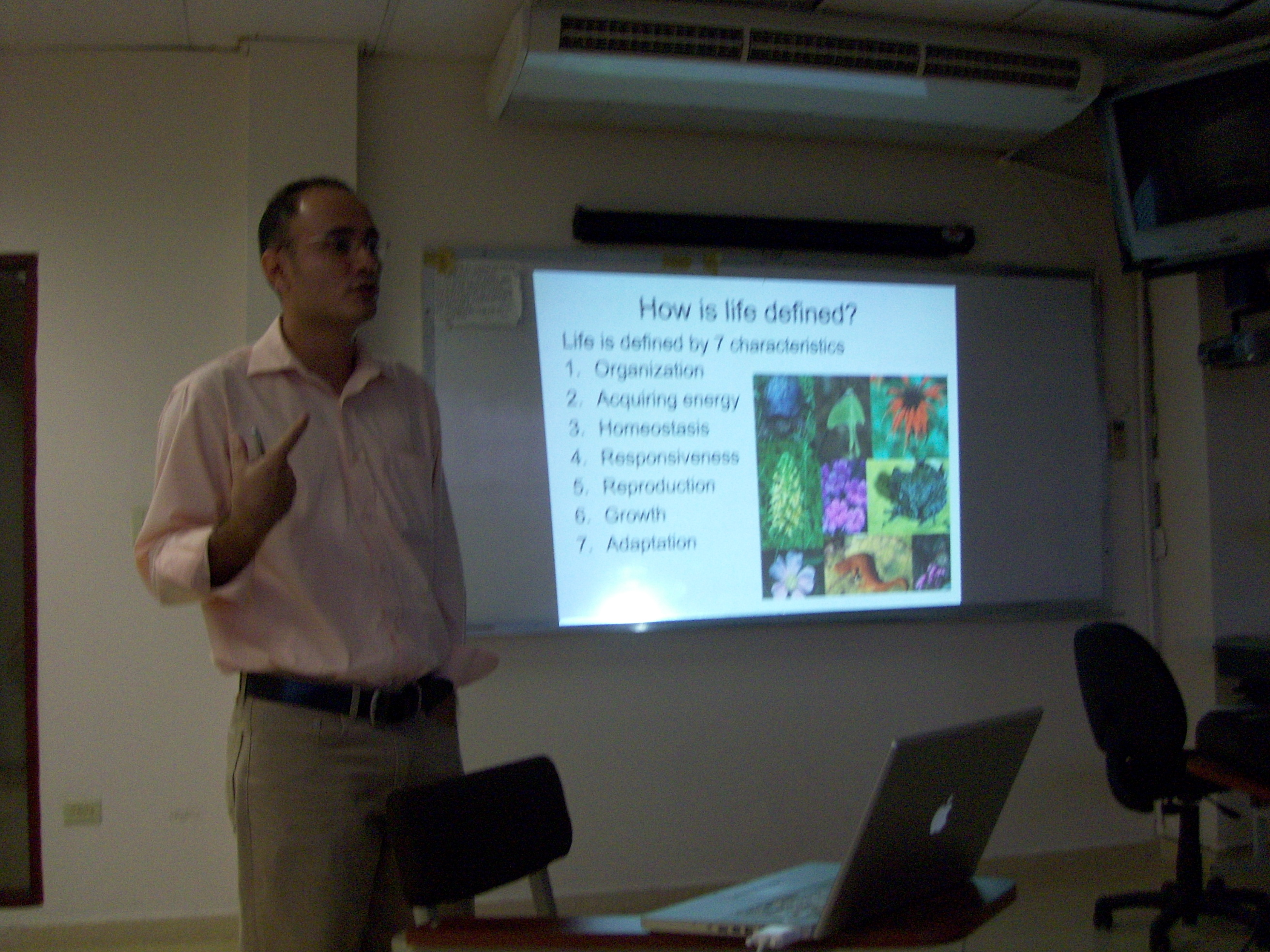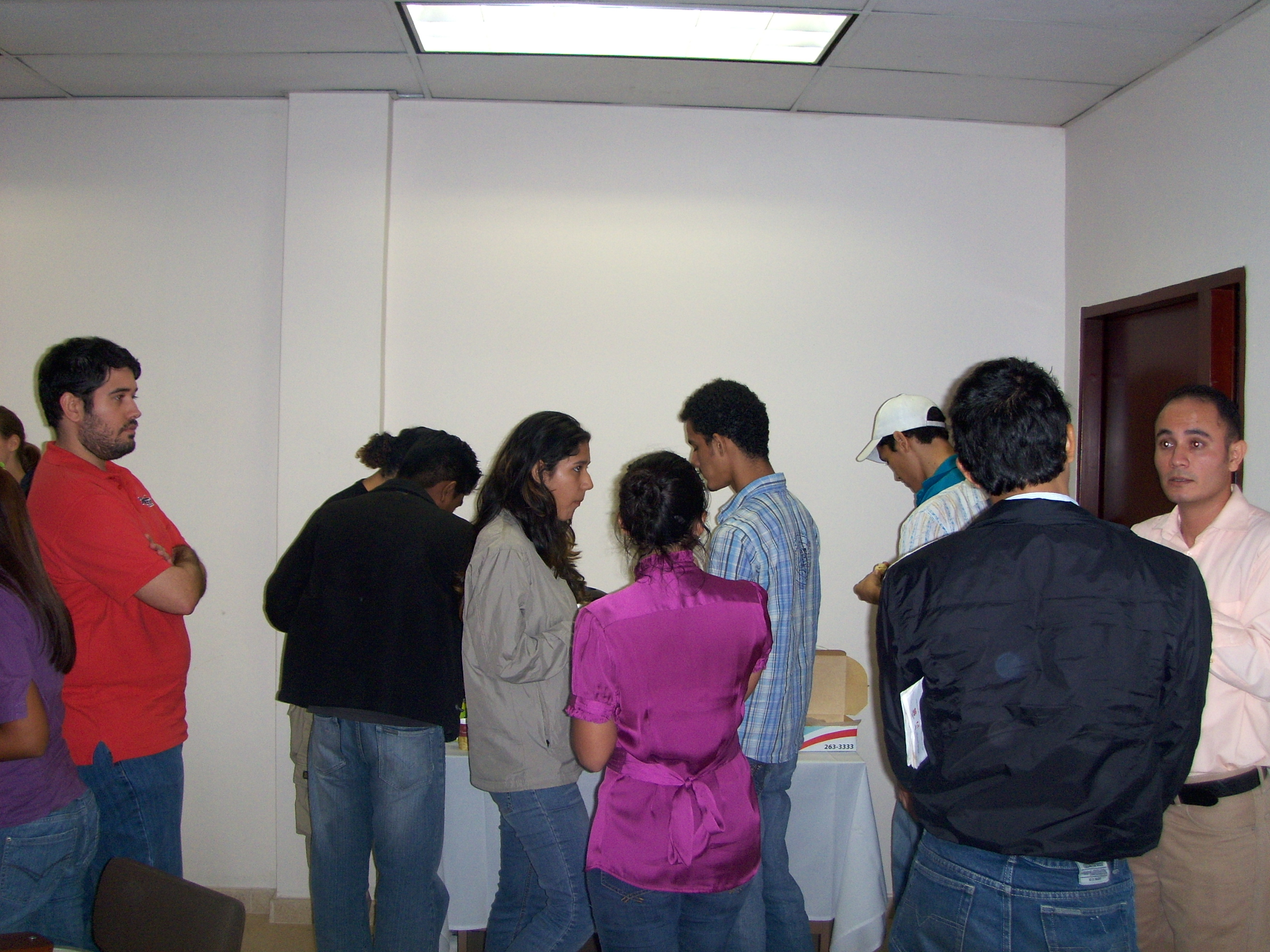Team:Panama/Notebook
From 2010.igem.org
(→Meeting June 26) |
(→Meeting June 26) |
||
| Line 28: | Line 28: | ||
Steps to follow: | Steps to follow: | ||
| - | 1.Amplified the Rhamnosyltransferase 1 complex from Pseudomona auruginosa and clone this fragment. Size aprox 2.2 Kb. | + | 1.Amplified the Rhamnosyltransferase 1 complex from ''Pseudomona auruginosa'' and clone this fragment. Size aprox 2.2 Kb. |
2.Ligation / Transformation | 2.Ligation / Transformation | ||
3.Expression with reporter gen. | 3.Expression with reporter gen. | ||
| Line 69: | Line 69: | ||
Production of Cecropin compound. We want to produce the antibacterial cecropin compound. Naturally is produced by insects and plants. | Production of Cecropin compound. We want to produce the antibacterial cecropin compound. Naturally is produced by insects and plants. | ||
| - | We want to use Anopheles gambiae cecropin precursor. The gene is about 550 pb. | + | We want to use ''Anopheles gambiae'', cecropin precursor. The gene is about 550 pb. |
Revision as of 19:58, 25 August 2010
Republic of Panama
Situated on the isthmus connecting North and South America, it
is bordered by Costa Rica to the northwest, Colombia to the southeast,
the Caribbean Sea to the north and the Pacific Ocean to the south.
Republic of Panama
Situated on the isthmus connecting North and South America, it is bordered by Costa Rica to the northwest, Colombia to the southeast, the Caribbean Sea to the north and the Pacific Ocean to the south.

iGEM PANAMA
In this picture: Carolina, Yisett, Claudio, Nicole, Lorena,
Grimaldo, Natasha, Laura, Ernesto, Dra. Carmenza, Dr. Rao, Ezequiel
iGEM PANAMA
In this picture: Carolina, Yisett, Claudio, Nicole, Lorena, Grimaldo, Natasha, Laura, Ernesto, Dra. Carmenza, Dr. Rao, Ezequiel

iGEM PANAMA
In this picture: Yisett, Silke, Yaraví, Carlos, Dr. Patrick
Nee.
iGEM PANAMA
In this picture: Yisett, Silke, Yaraví, Carlos, Dr. Patrick Nee.

iGEM PANAMA
In this picture: Leyda, Zeuz, Laura
iGEM PANAMA
In this picture: Leyda, Zeuz, Laura

iGEM PANAMA
Labs.
iGEM PANAMA
Labs.

Notebook
Meeting July 21
Meeting June 26
At this moment we have two ideas for develop. We are debating which idea is more feasible. Idea #1: Carlos´s team idea We want to produce Rhamnolipid in bacteria (E.coli) to use it as a biosurfactant. We have to see how we can isolate the rhamnolipid, and be sure that the translation is functional.
Steps to follow:
1.Amplified the Rhamnosyltransferase 1 complex from Pseudomona auruginosa and clone this fragment. Size aprox 2.2 Kb. 2.Ligation / Transformation 3.Expression with reporter gen. 4.Isolation 5.Is the protein functional? 6.Make sure that the rhamnolipid is produced in prescence of rhamnose and fatty acid.
Notes:
We can see the reaction (enzymatic measure) by spectrometry. See kind of ligation.
But first, before the amplification we need to design our primers.
Primers design:
1.Check the gene sequence (In GenBank, FASTA format) 2.Design the primer sequence. 3.See kind of cloning. 4.M13 tail for cleavage site. 5.Look for cleavage site inside the rhamnosyltransferase 1 gene for our restriction enzymes. We can´t cut our gene in the process.
In summary the steps that we need to follow are:
I.Primer design II.PCR or amplification III.Cloning IV.Expression V.Sequencing
The most important steps are I and II. We need a good primers design and PCR if we want to have successful.
Idea #2
Ernesto team´s idea
Production of Cecropin compound. We want to produce the antibacterial cecropin compound. Naturally is produced by insects and plants.
We want to use Anopheles gambiae, cecropin precursor. The gene is about 550 pb.
The steps to follow are the same in both groups.
Both groups have to design the primers, and have all the experimental design for this week.
1.The sequence of the interested gene. 2.Design the primers. (50-100pb more at the beginning and end of the sequence). 3.Check for cloning sites. Which plasmid we are going to use, identify the restriction enzymes. 4.Assemble the blocks. In paper assemble all the system. Promoter + Ribosomal binding site + interest gene + reporter gene + translation end site.
All the design has to be on paper to analyze them and decided which idea is going to be the elected one.
Wetlab 103: Let's make an E. coli that fluoresce (or some simple BioBrick project)
- Instructor: INDICASAT, Dr. Carmenza Spadafora
- Date: (17h00-20h00 11th of June)
- Venue: INDICASAT
- Description: We identify a simple project based on past iGEM work and do our first BioBrick protocol project. Nothing innovative, but an opportunity to practice the protocols.
Wetlab 102: Let's raise a few E. coli
- Instructor: Lorena Coronado and and Dr. Carmenza Spadafora
- Date: (17h00-20h00 11th of June)
- Venue: INDICASAT
- Description: How does one handle E. coli?
Wetlab 101: Tools of the lab and their use
- Instructor: Dr. Patricia Llanes
- Date: (17h00-20h00 9th June)
- Venue: INDICASAT
- Description: How to handle pipettes, clean test tubes, etc.
iGEM workshop follow up: Safety, ethics
- Instructor: Dr. Ricardo Lleonart
- Date: (17h00-20h00 9th of June)
- Venue: INDICASAT
- Description: There is definetly a "safety considerations" requirement and we should address it early.
iGEM workshop follow up: Software tools
- Instructor: Patrick / Sara
- Date: (17h30-20h00 Monday 7th June)
- Venue: INDICASAT
- Description: Software tools available from the workshop.
DNA 104: BioBricks Protocol
- Instructor: Sara/Patrick
- Date: (17h30-20h00 Monday 7th June)
- Venue: INDICASAT
- Description: Introduction to the BrioBricks protocol
INDICASAT lecture: Innovation
- Instructor: Dr. Jagannatha Rao, Director of INDICASAT
- Date: (17h30-20h00 Friday 4th June)
- Venue: INDICASAT
- Description: Dr. Rao's lecture on how to innovate.
INDICASAT lecture: Drug discovery in nature
- Instructor: Dr. Sergio Martinez
- Date: (17h00-20h00 Thursday 3rd June)
- Venue: INDICASAT
- Description:Would be a brainstorming session as students start thinking about projects. It would be GREAT if we could take a molecule discovered by INDICASAT in coral/frogs/nature and put it in E. coli!...
DNA 103: DNA modification, plasmids
- Instructor: Dr. Abby Guerra
- Date: 26 May 17h00-20h00
- Venue: UTP
- Description:Introduction to long tested combinant DNA techniques, the role of plasmids in bacteria, and their use as a vector for DNA modification.
DNA 102: Protein creation relationship to cellular function. 26 May
- Instructor: Dr. Abby Guerra
- Date: 26 May 17h00-20h00
- Venue: UTP
- Description: Introduction to how DNA drives cellular functions by creating proteins
DNA 101: Information store, replication. 26 May
- Instructor: Dr. Abby Guerra
- Date: 26 May 17h00-20h00
- Venue: UTP
- Description: A basic refresher course on how DNA stores information in the cell, and how it is involved in cellular replication.
 "
"







